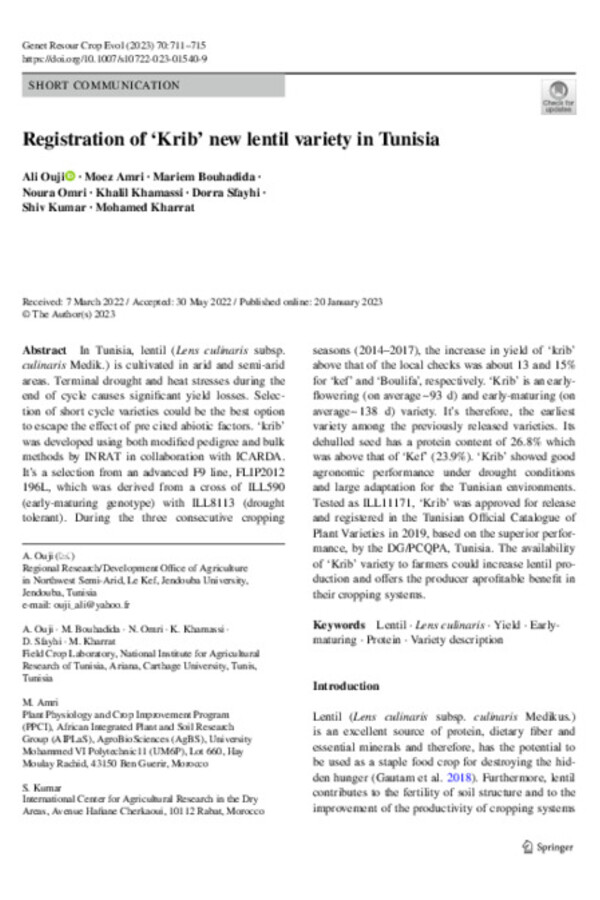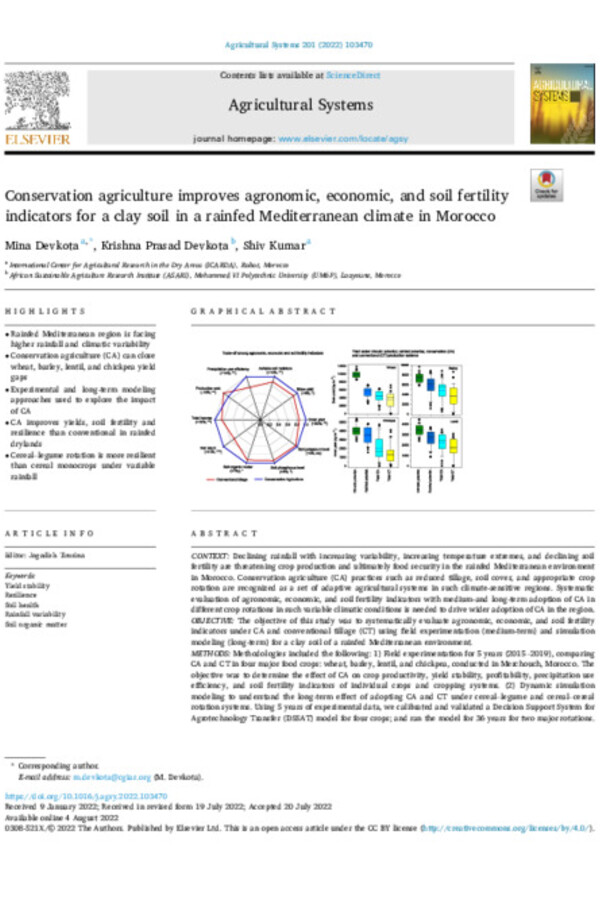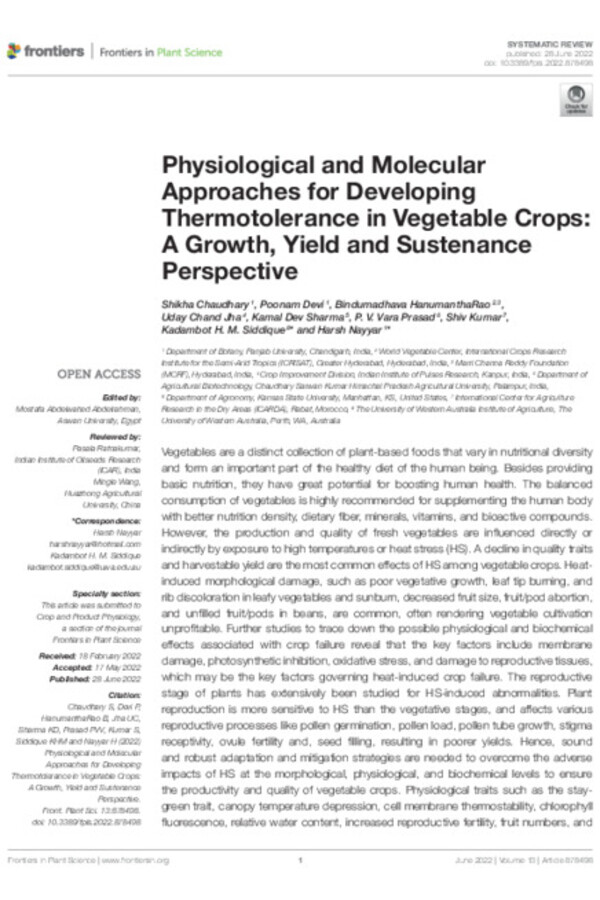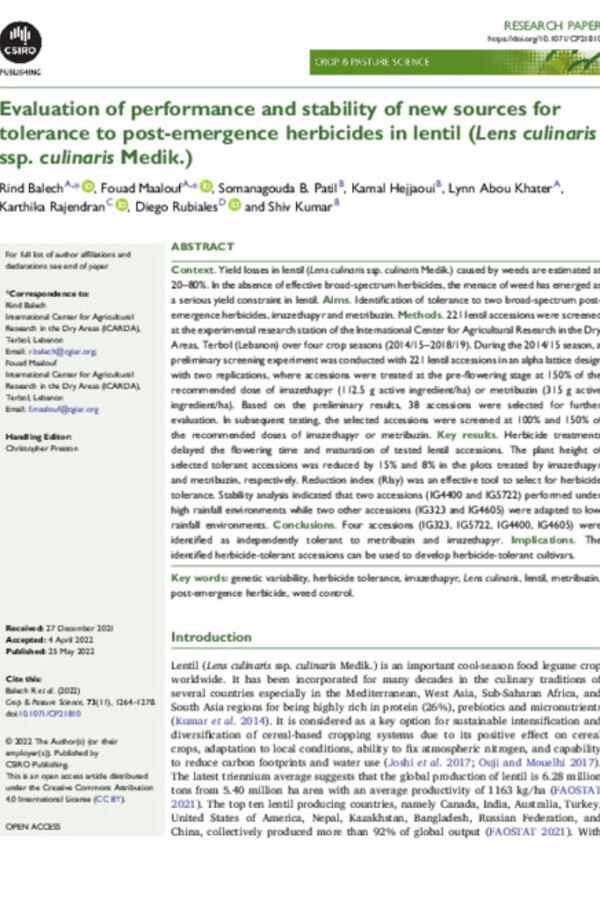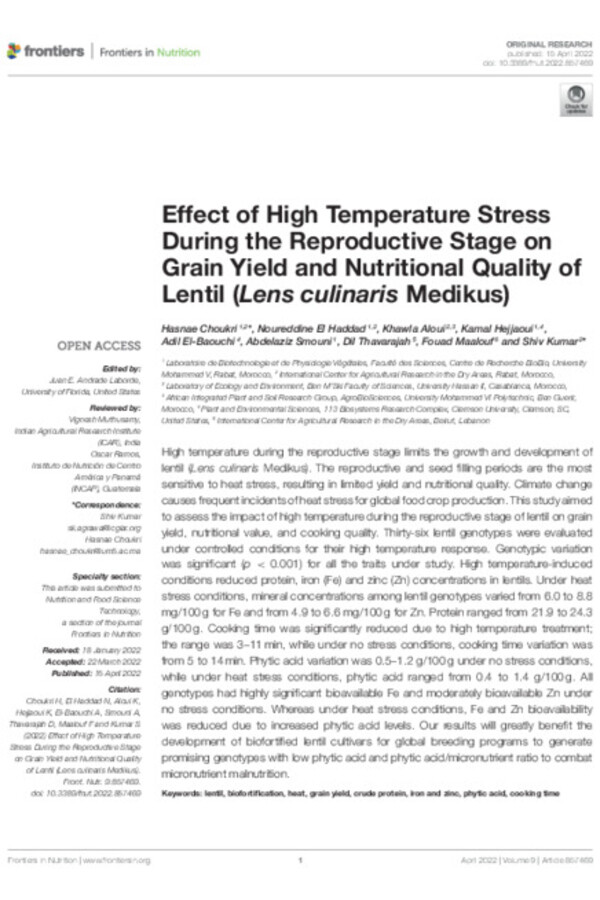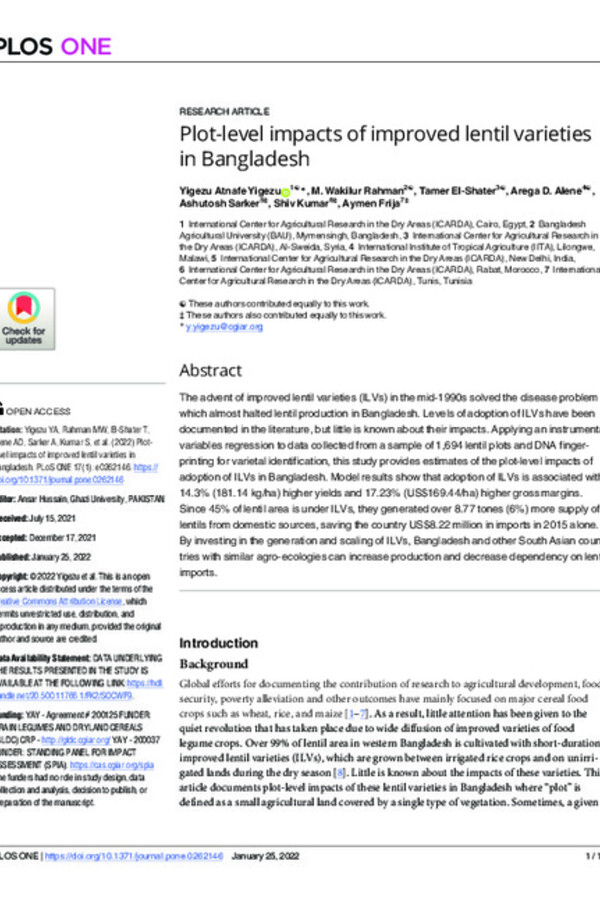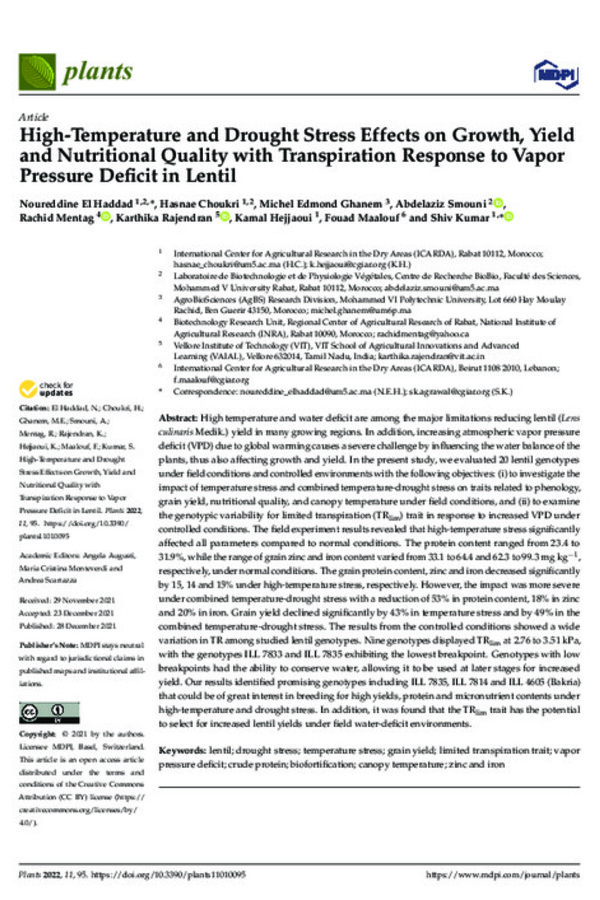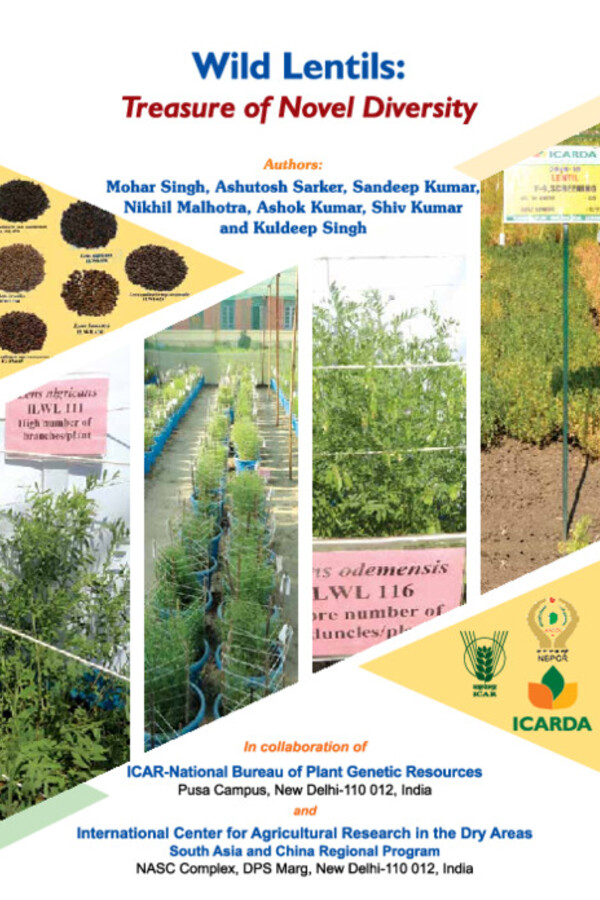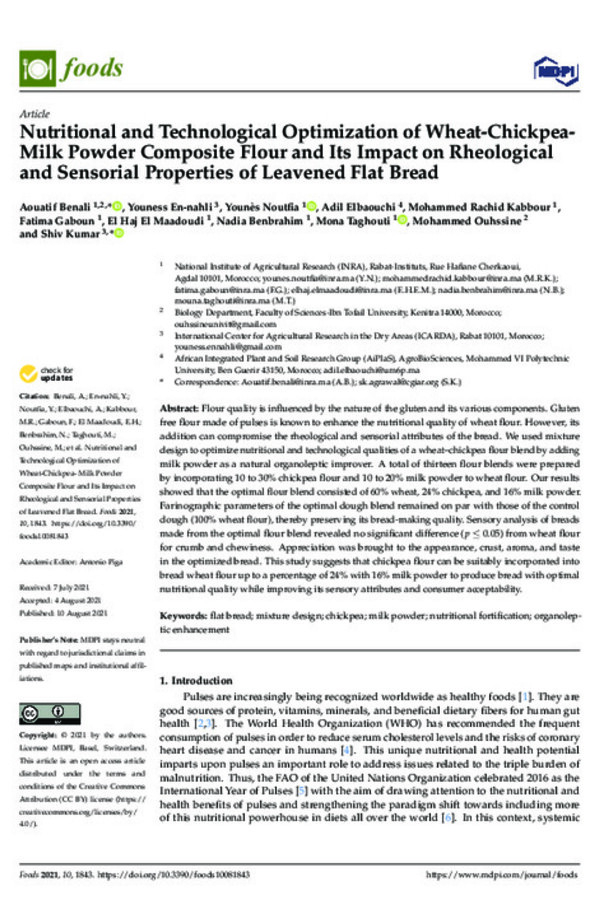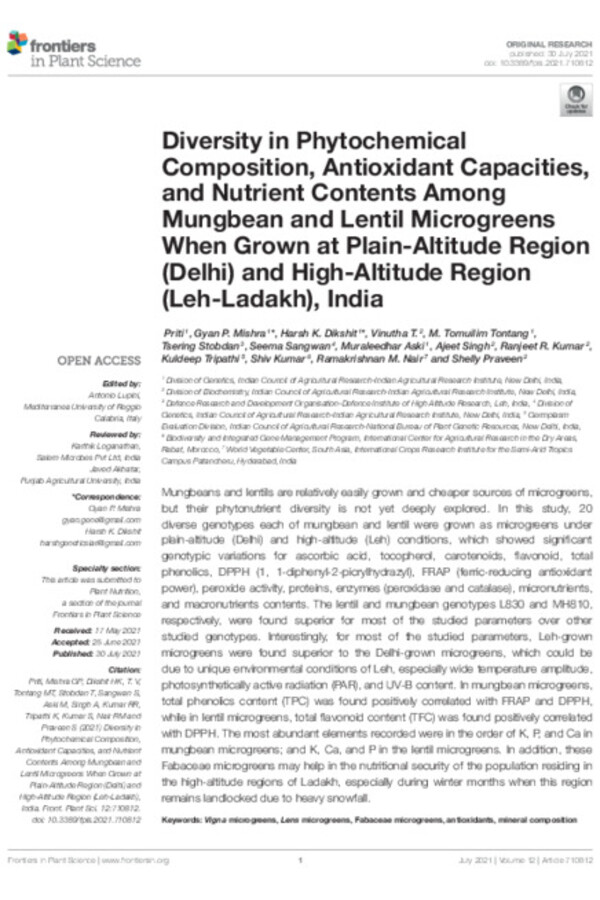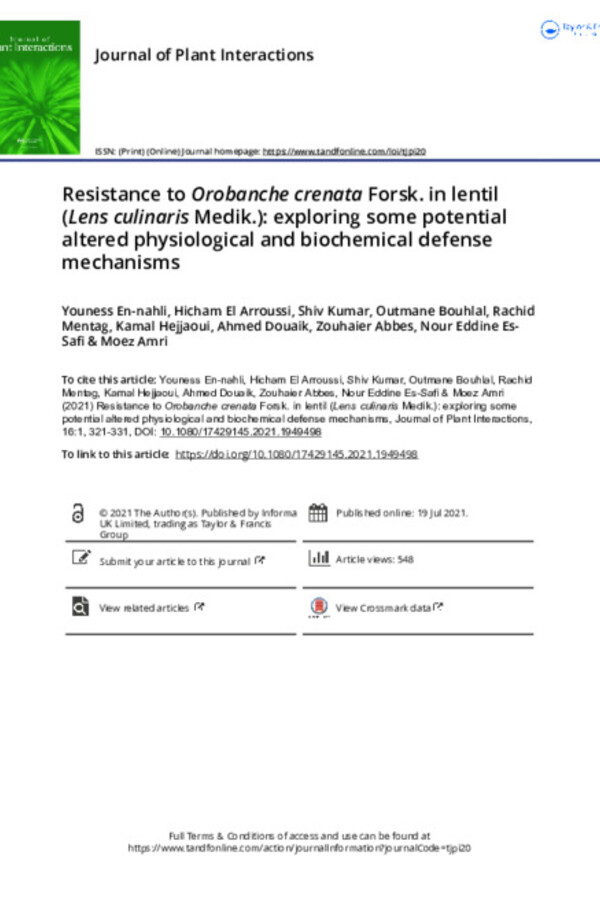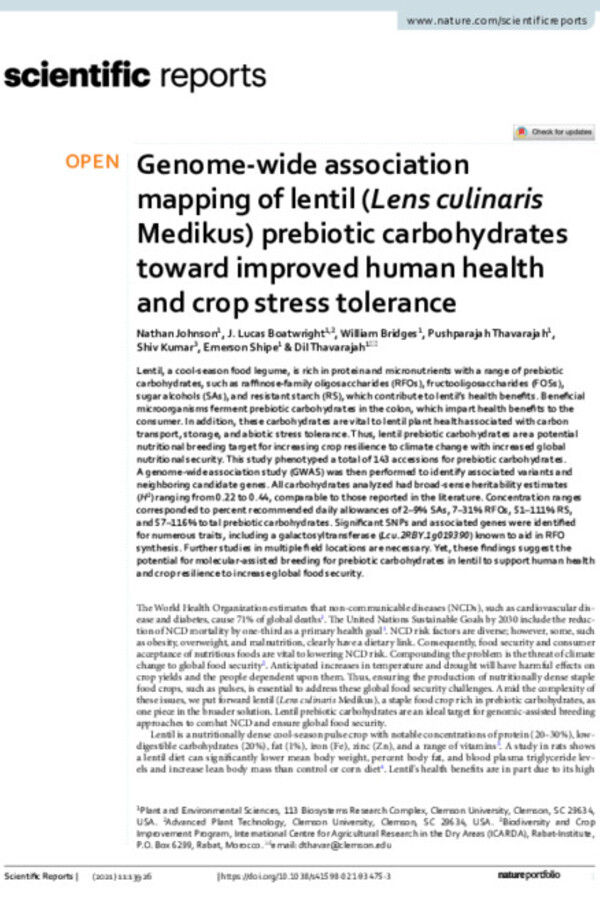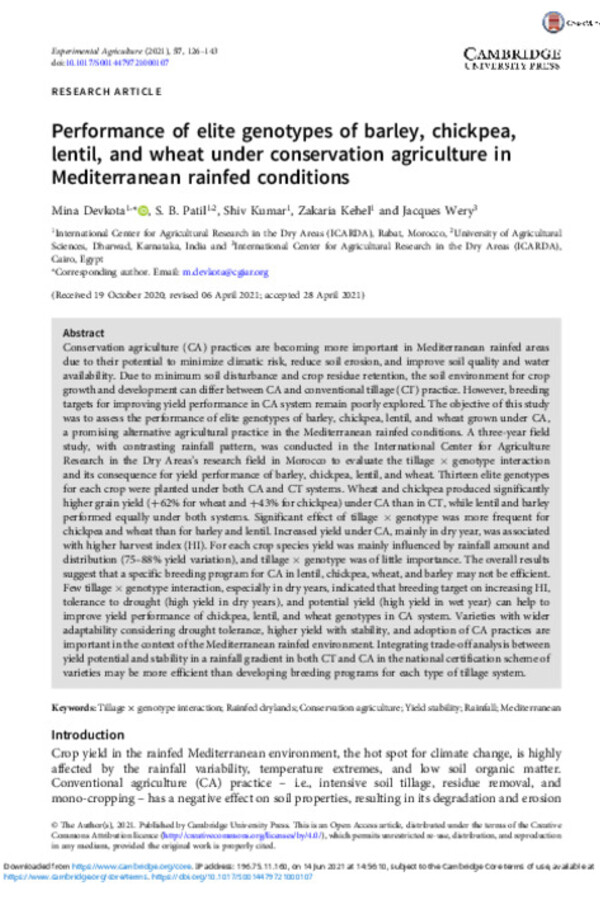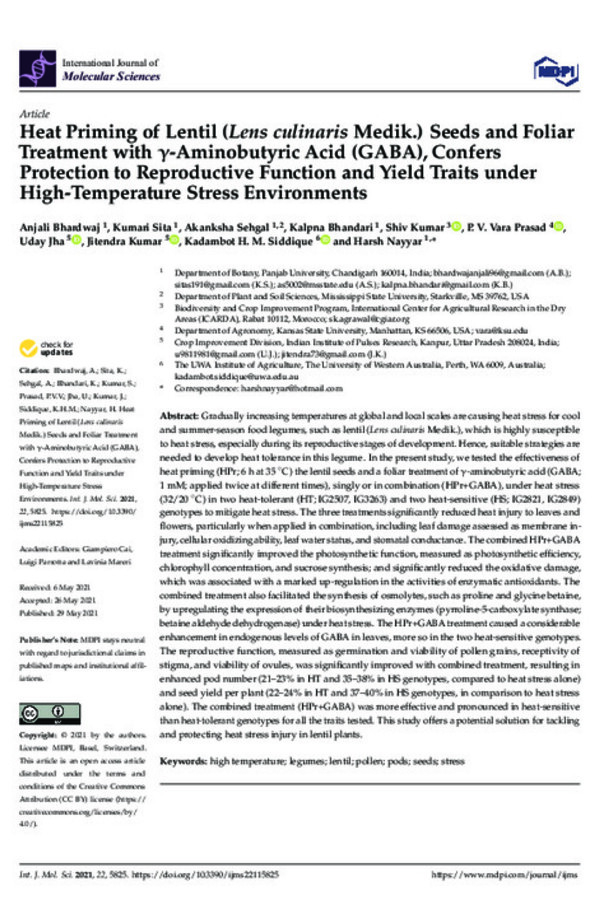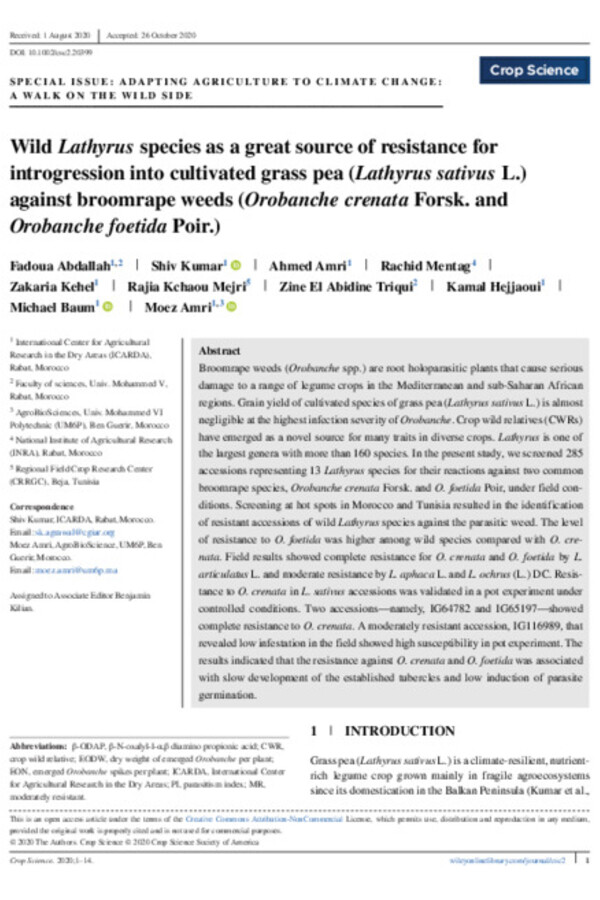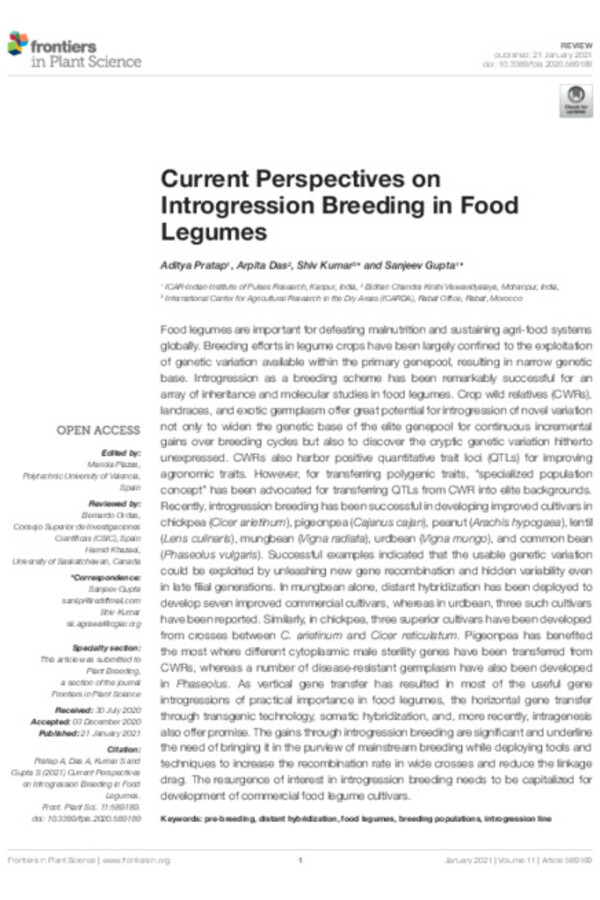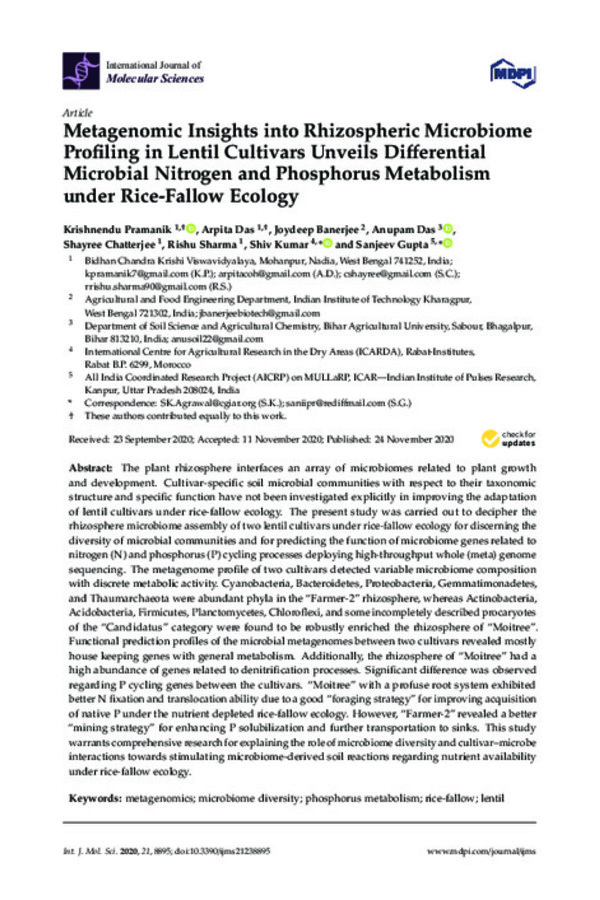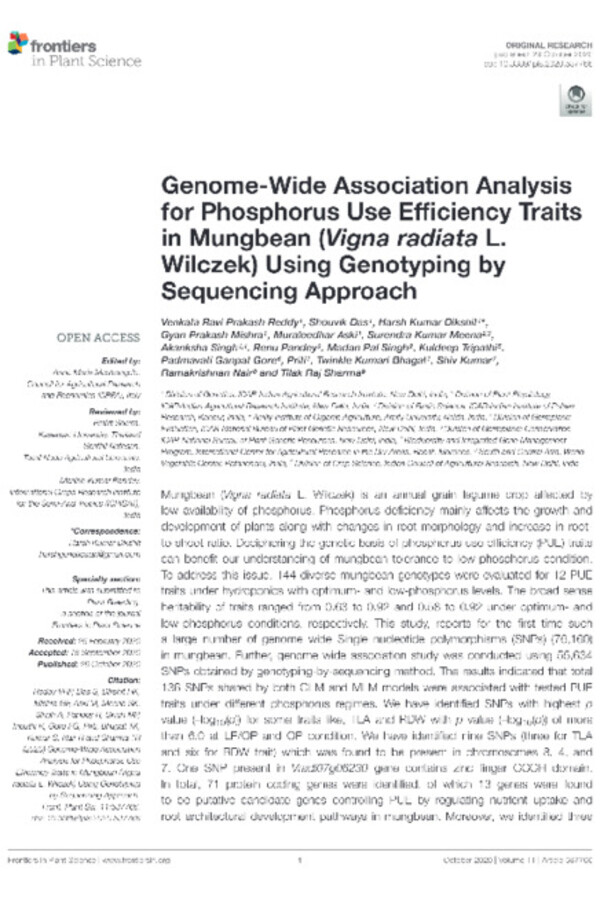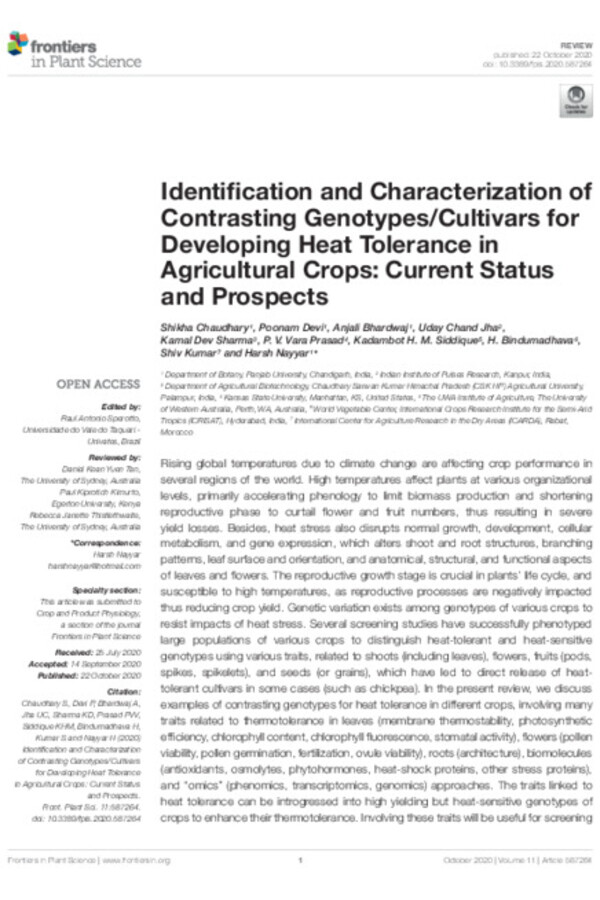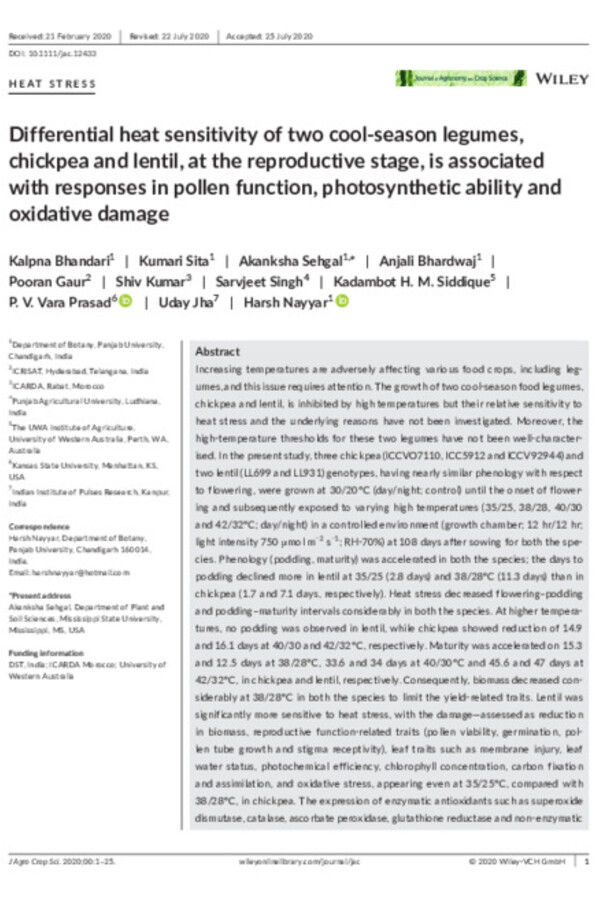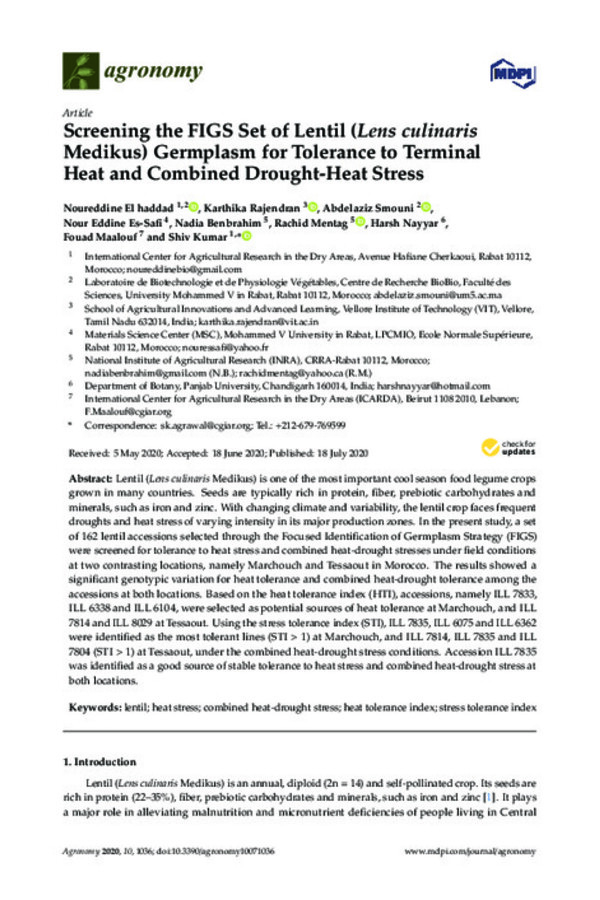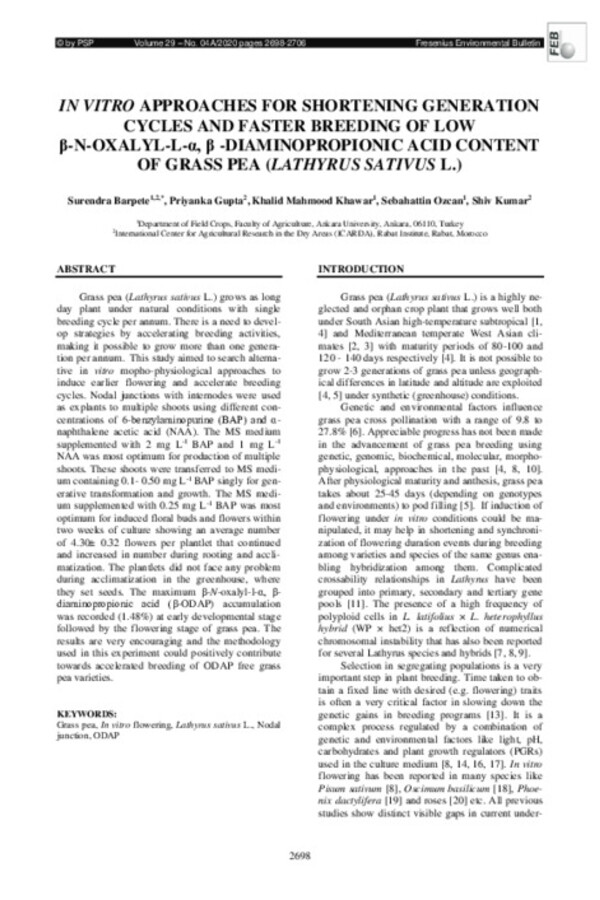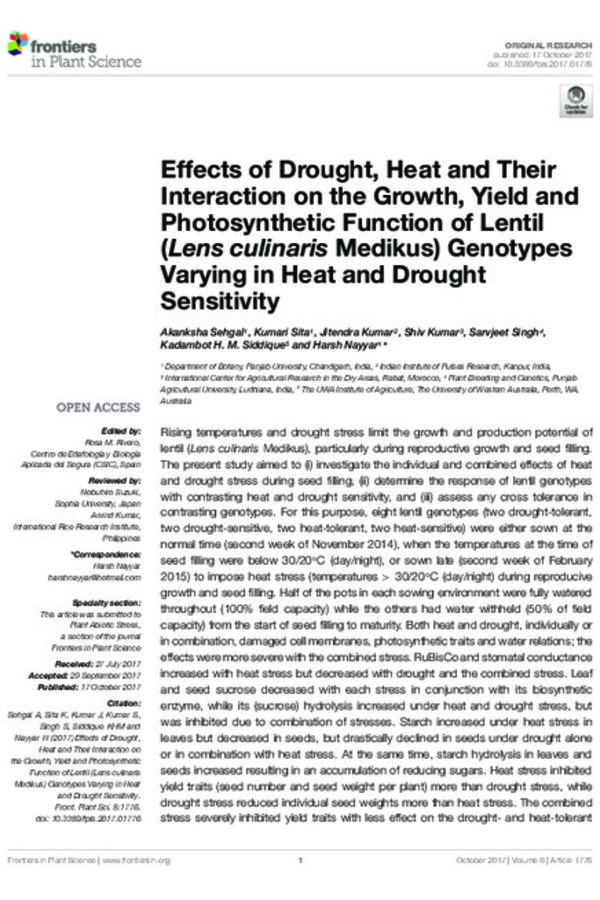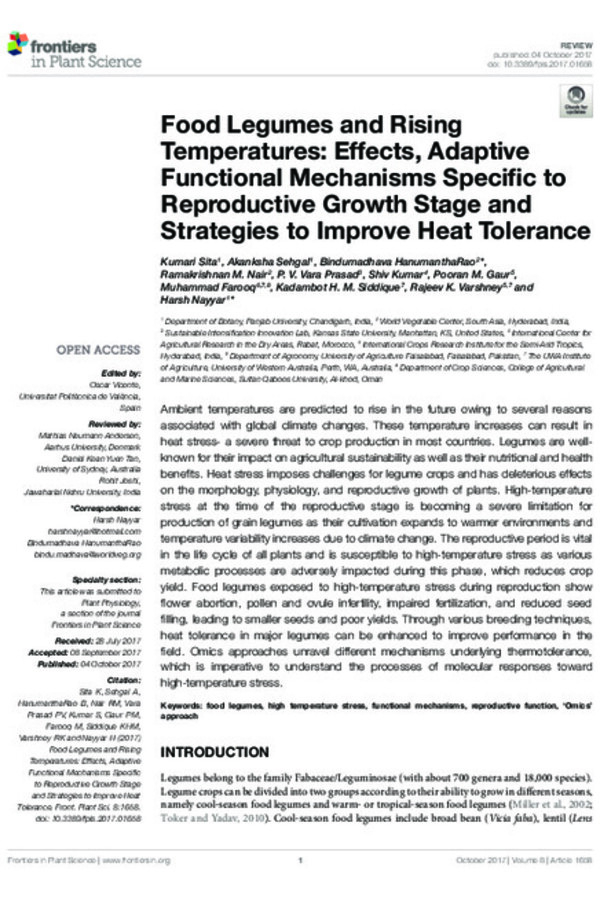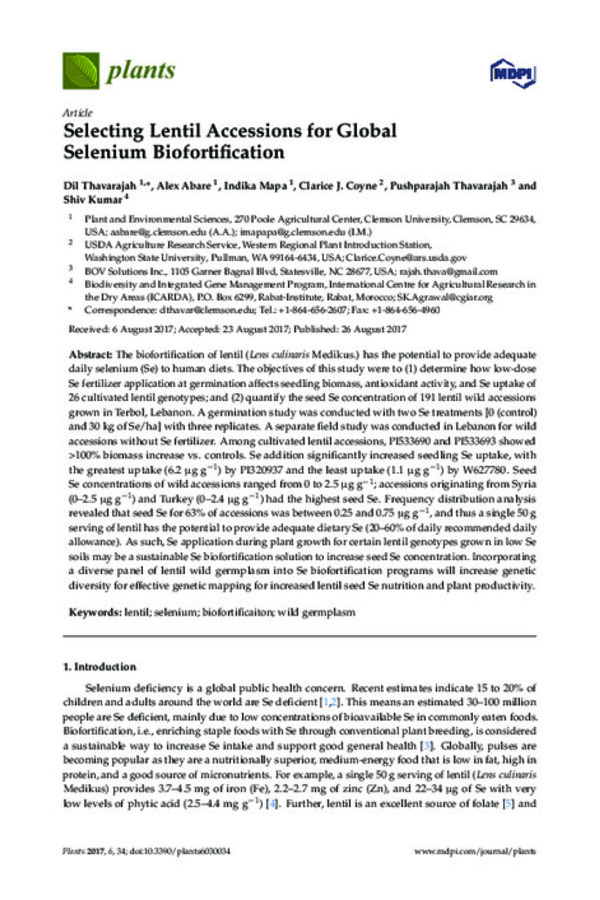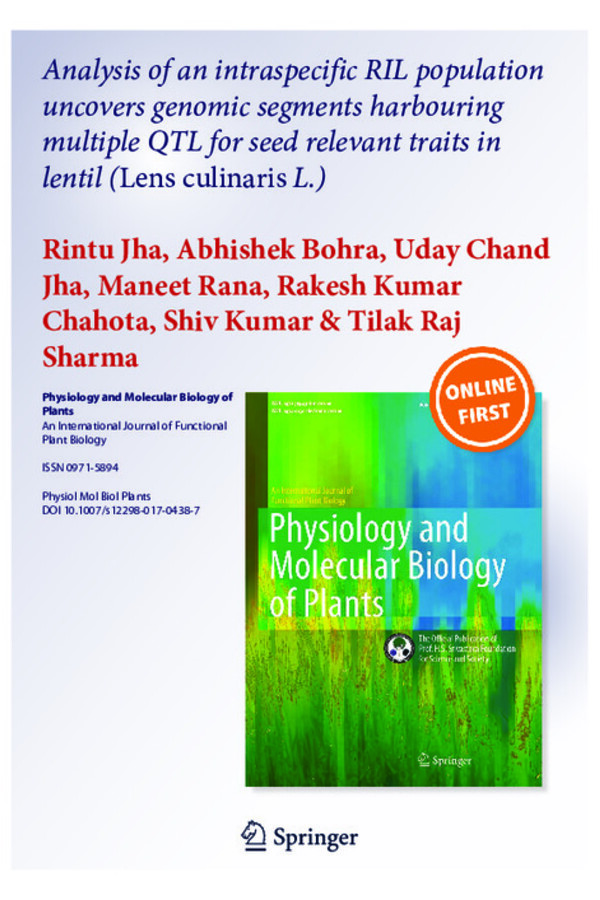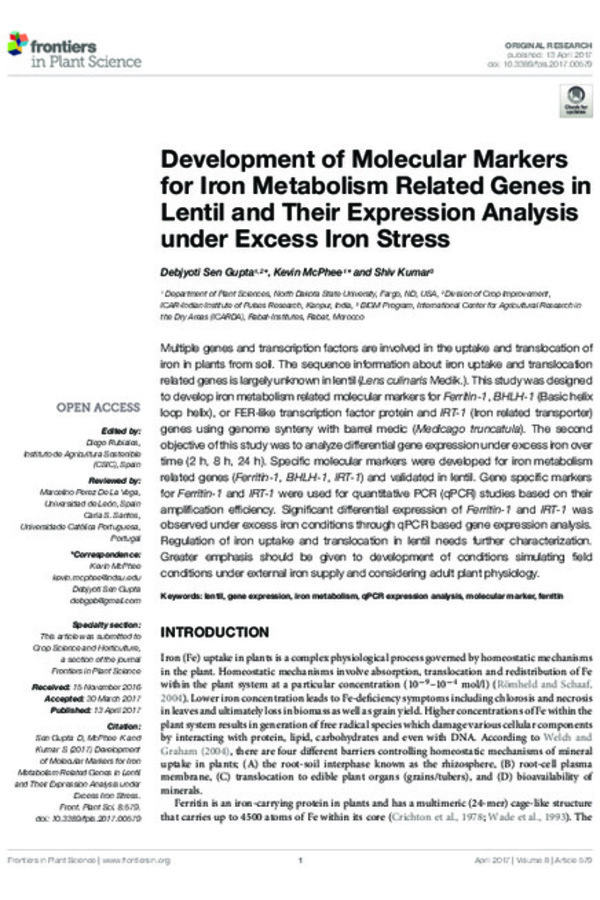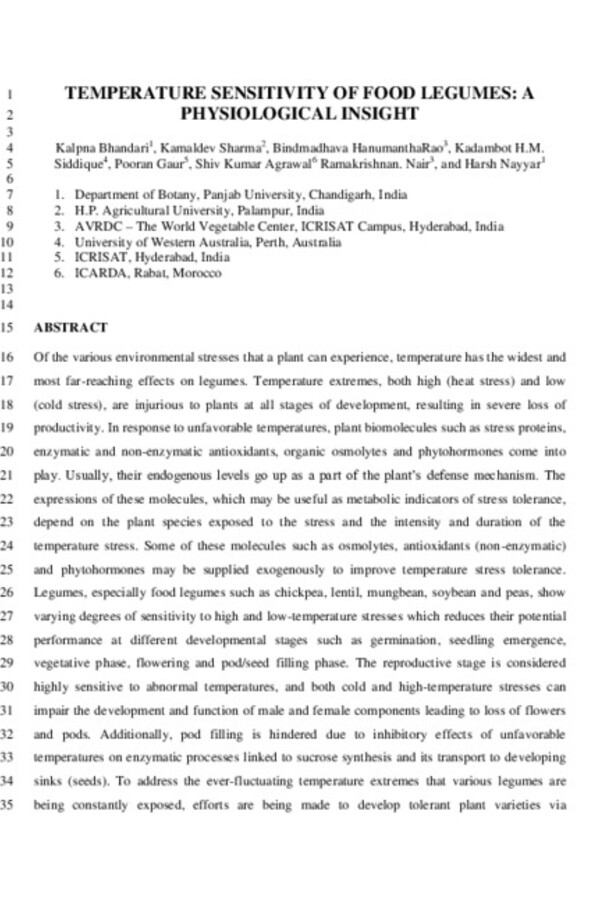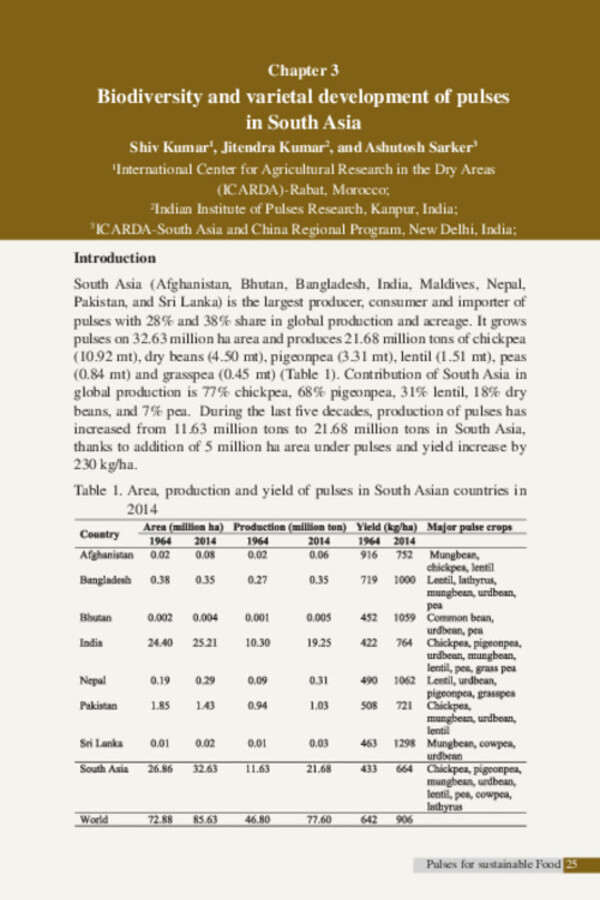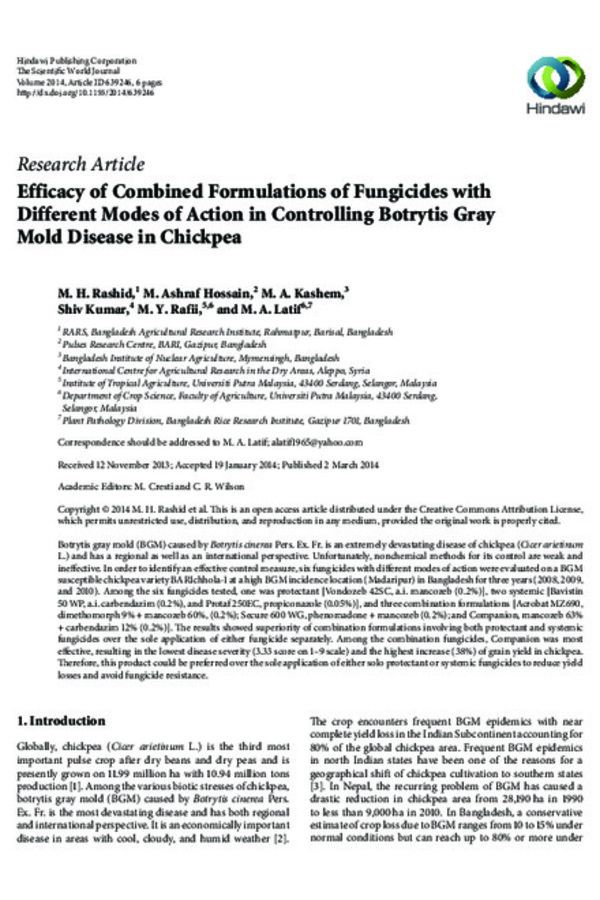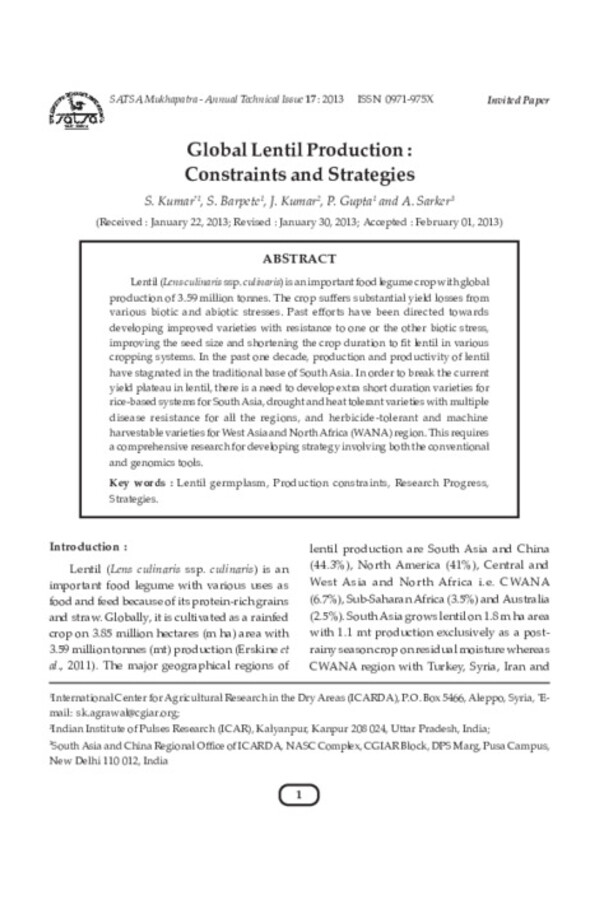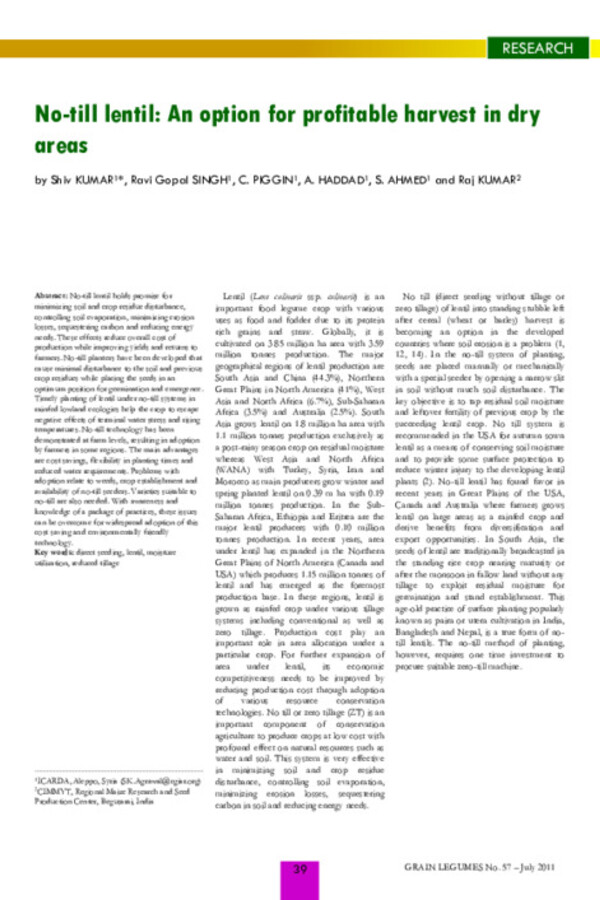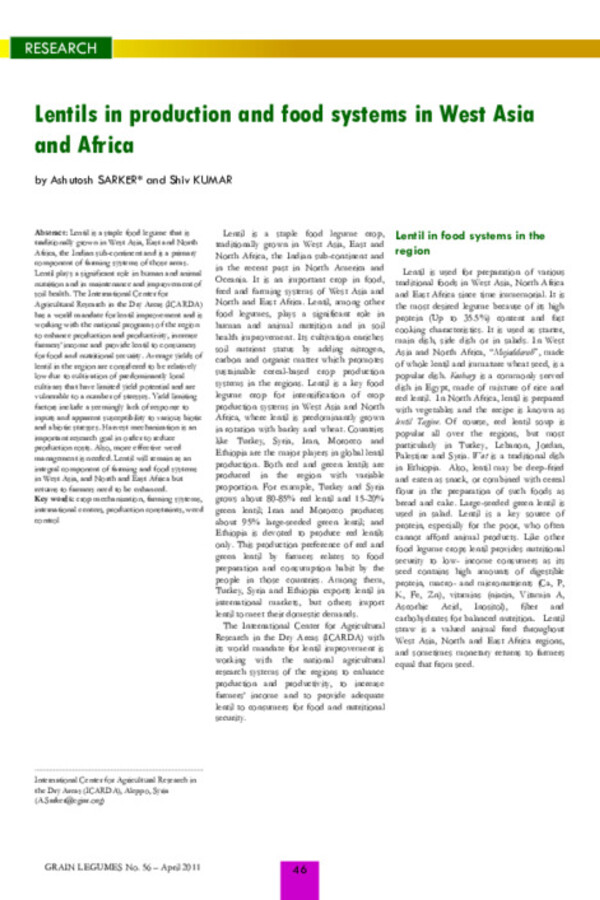
Shiv Kumar Agrawal
Dr. Shiv Kumar Agrawal is ICARDA’s regional coordinator for South Asia and China and head of the Food Legumes Program, which aims to deliver improved germplasm of lentil, kabuli chickpea, faba bean, and grass pea to national partners in South Asia, sub-Saharan Africa, West Asia, and North Africa. He works on developing short-duration, climate-smart varieties of lentil and grass pea, with high iron and zinc content for the sustainable intensification of cereal-based cropping systems.
During his three-decade career he has worked with national and international partners to develop 39 lentil, five mungbean, two urdbean, one rice, and three grass pea varieties. He has published 160 peer-reviewed journal articles, 68 book chapters, nine books, seven technical bulletins, and two training manuals. He also supervises students for master’s and Ph.D. research, and trains national partners in legume improvement.
Dr. Agrawal holds a Ph.D. in plant breeding from the Govind Ballabh Pant University of Agriculture and Technology, Pantnagar, India.
Shiv Kumar Agrawal's Publications

Genome-wide association studies of nutritional traits in peas (Pisum sativum L.) for biofortification
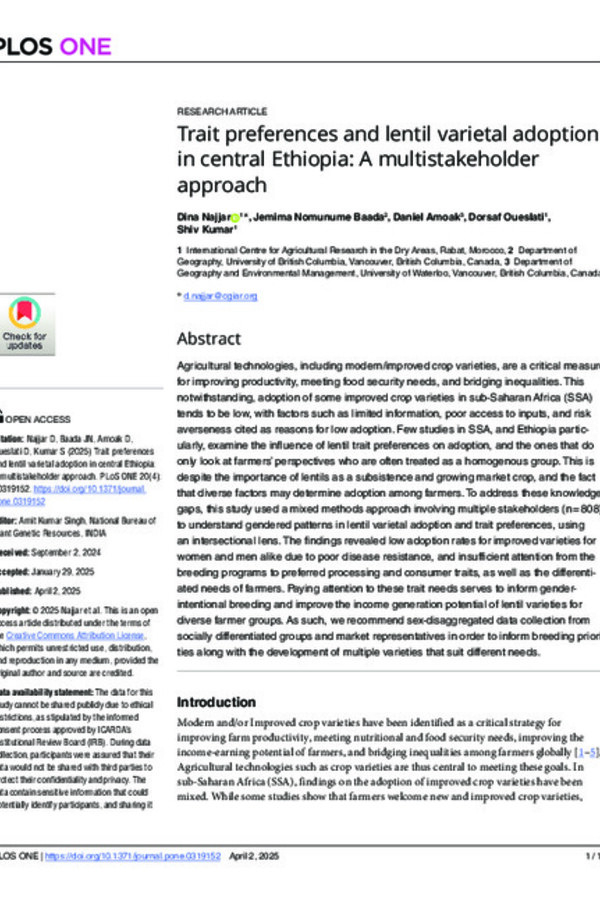
Trait preferences and lentil varietal adoption in central Ethiopia: A multistakeholder approach

Investigating Genetic Diversity and Correlations Between Mineral Concentration and Neurotoxin (β-ODAP) Content in the Lathyrus Genus
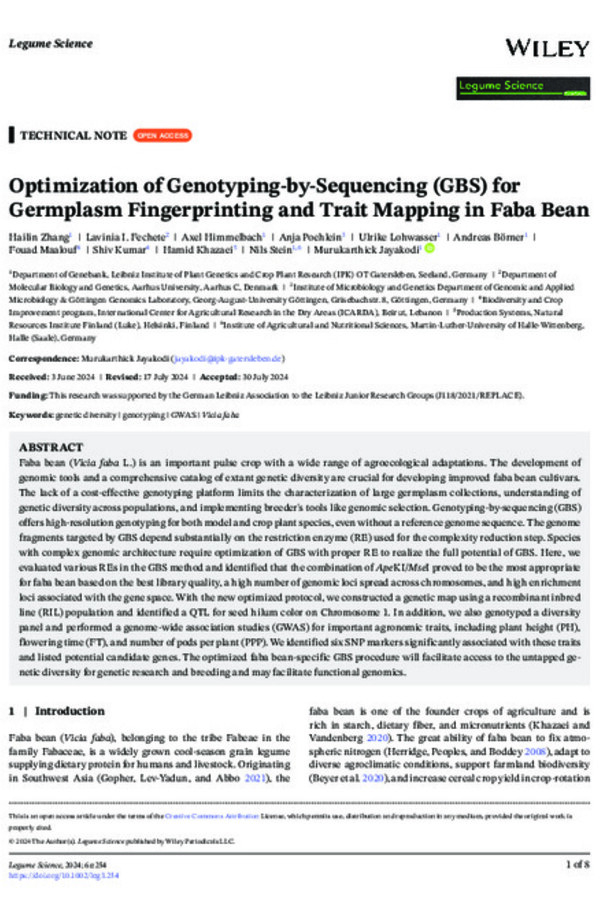
Optimization of Genotyping-by-Sequencing (GBS) forGermplasm Fingerprinting and Trait Mapping in Faba Bean

Exploring the genetic variability for root traits in mung bean under salinity stress
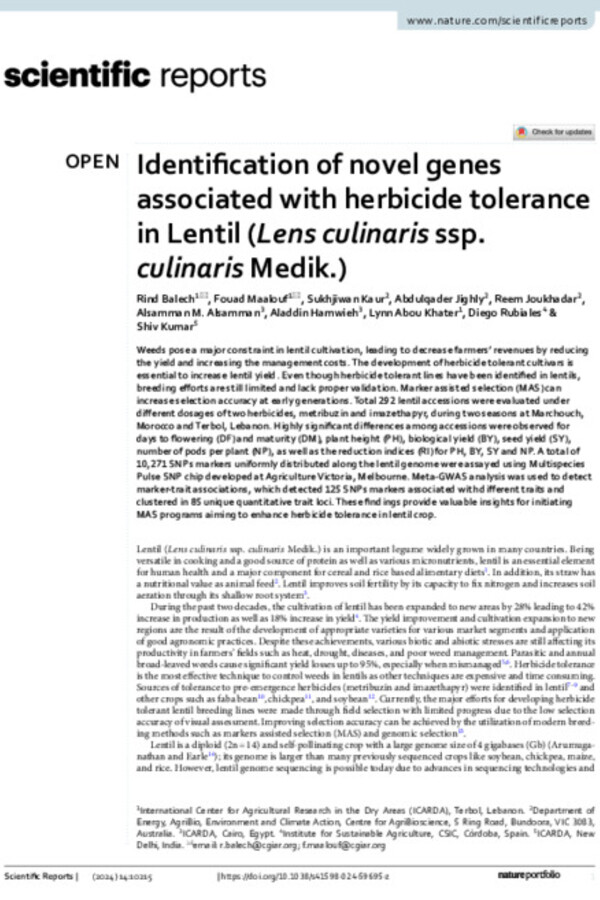
Identification of novel genes associated with herbicide tolerance in Lentil (Lens culinaris ssp. culinaris Medik.)
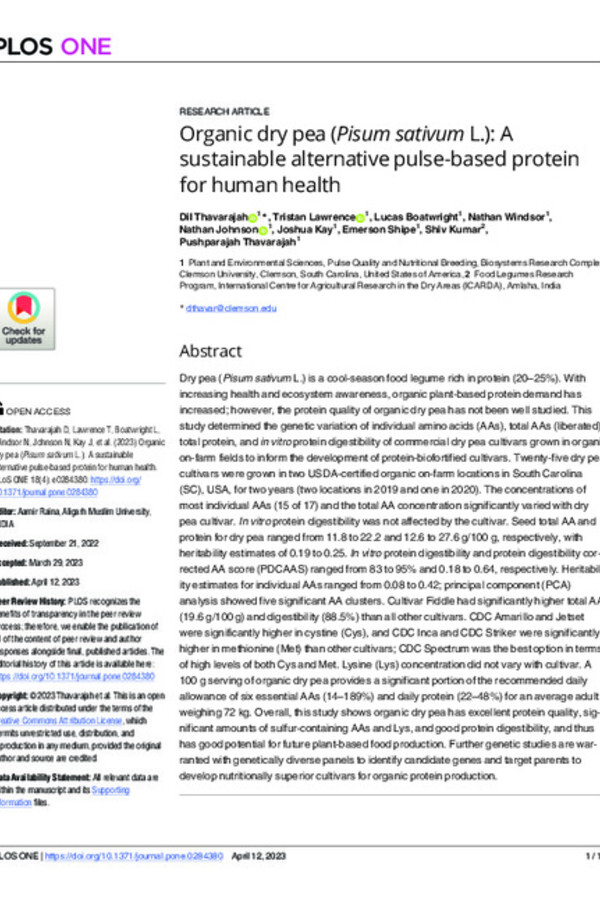
Organic dry pea (Pisum sativum L.): A sustainable alternative pulse-based protein for human health
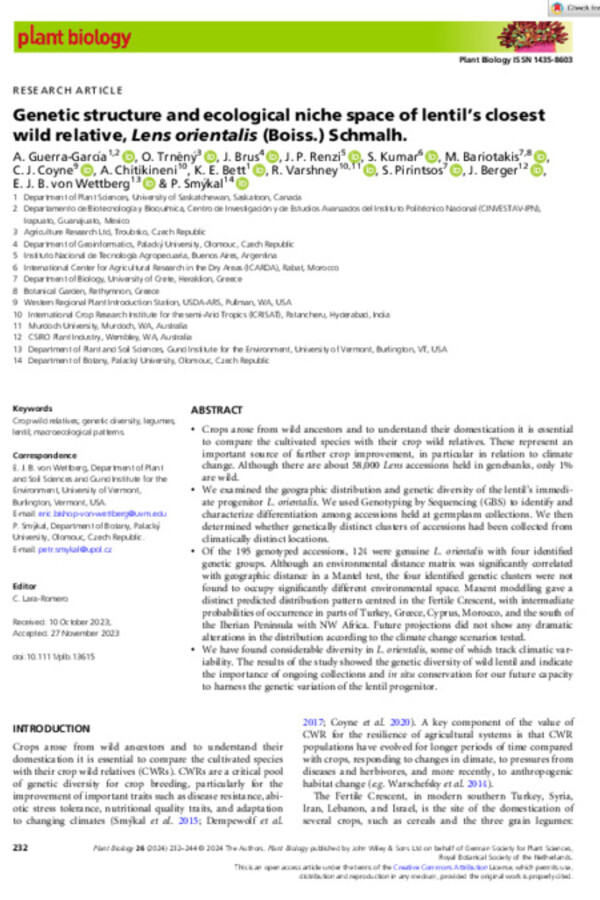
Genetic structure and ecological niche space of lentil's closest wild relative, Lens orientalis (Boiss.) Schmalh.

Disease spectrum and its molecular characterisation in the lentil production system of lower-Indo Gangetic plains
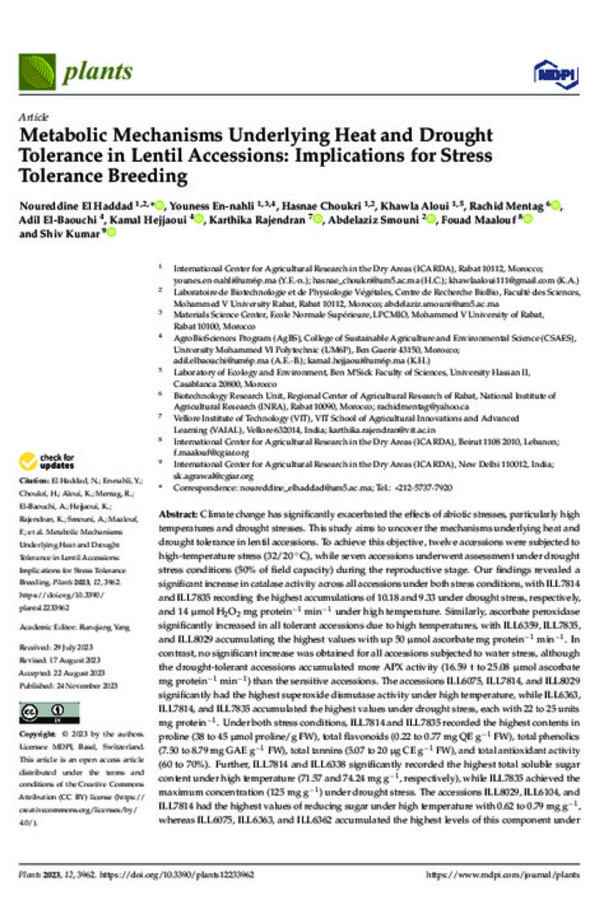
Metabolic Mechanisms Underlying Heat and Drought Tolerance in Lentil Accessions: Implications for Stress Tolerance Breeding
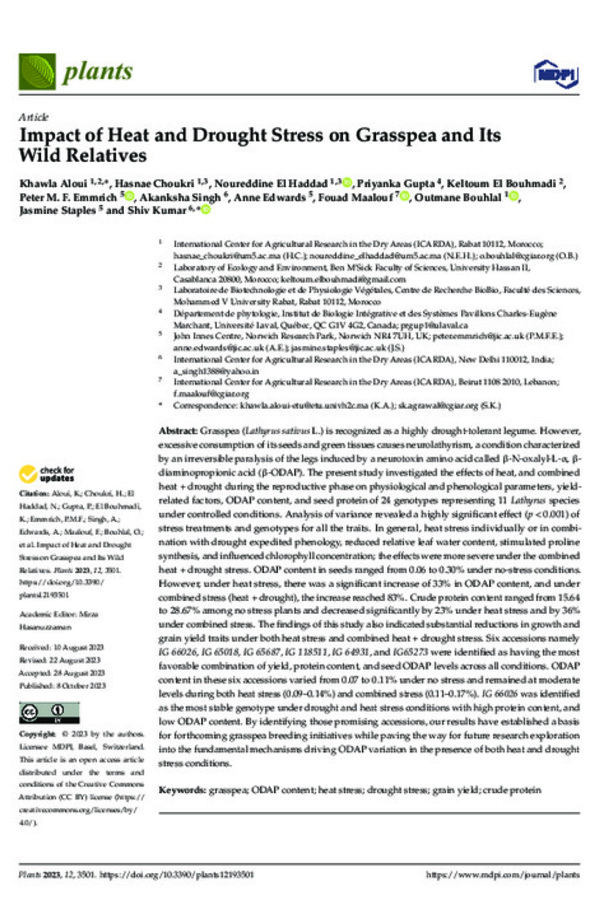
Impact of Heat and Drought Stress on Grasspea and Its Wild Relatives
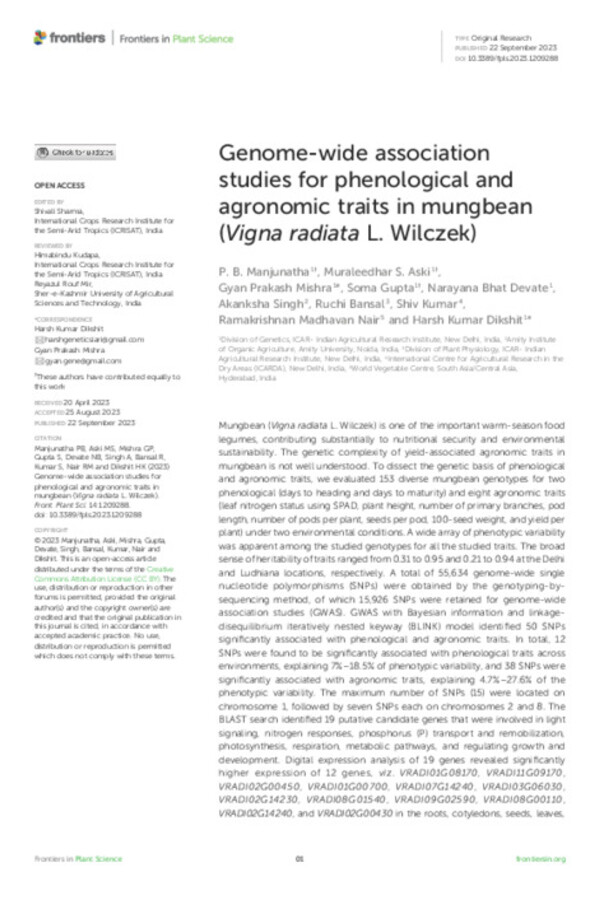
Genome-wide association studies for phenological and agronomic traits in mungbean (Vigna radiata L. Wilczek)
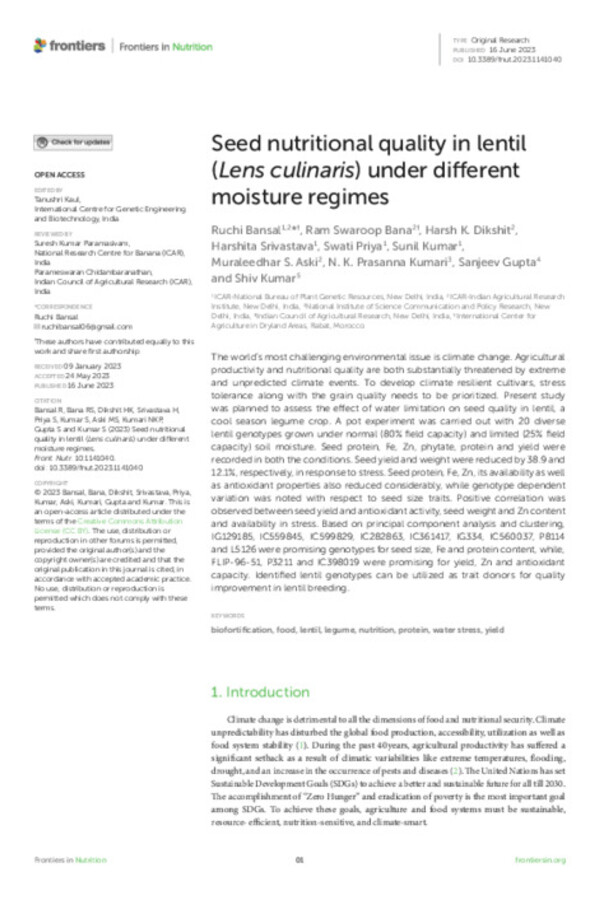
Seed nutritional quality in lentil (Lens culinaris) under different moisture regimes

Genomics and biochemical analyses reveal a metabolon key to β-L-ODAP biosynthesis in Lathyrus sativus
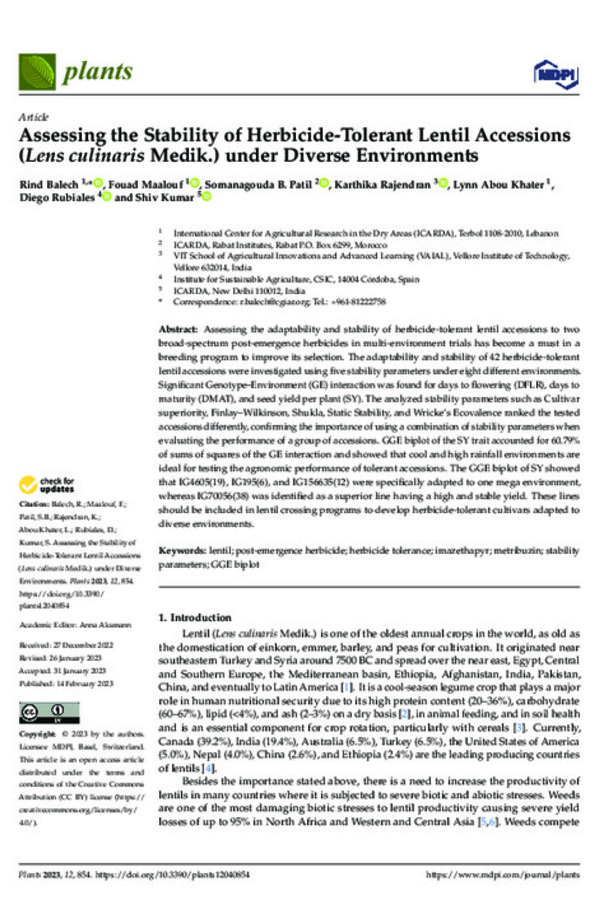
Assessing the Stability of Herbicide-Tolerant Lentil Accessions (Lens culinaris Medik.) under Diverse Environments
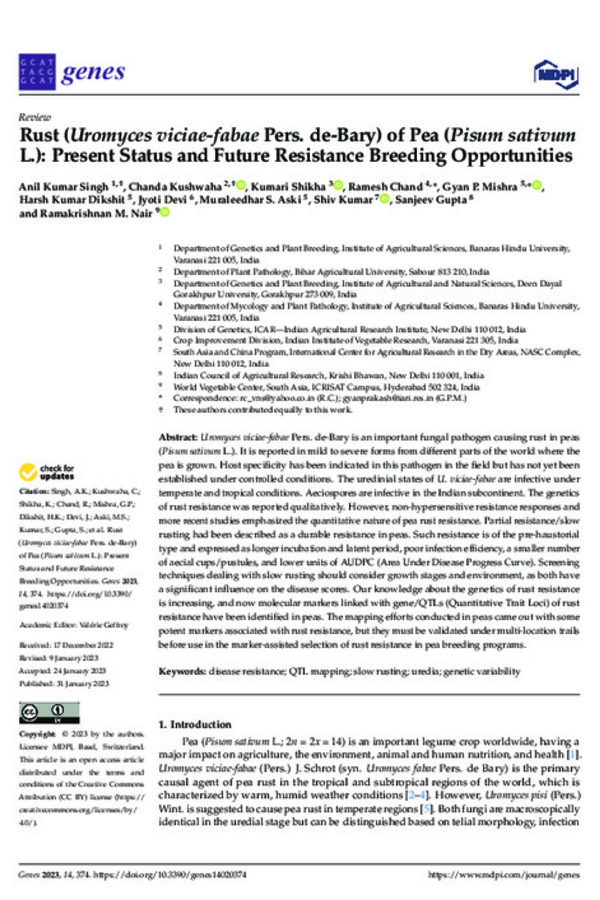
Rust (Uromyces viciae-fabae Pers. de-Bary) of Pea (Pisum sativum L.): Present Status and Future Resistance Breeding Opportunities

Genetic Variation for Traits Related to Phosphorus Use Efficiency in Vigna Species
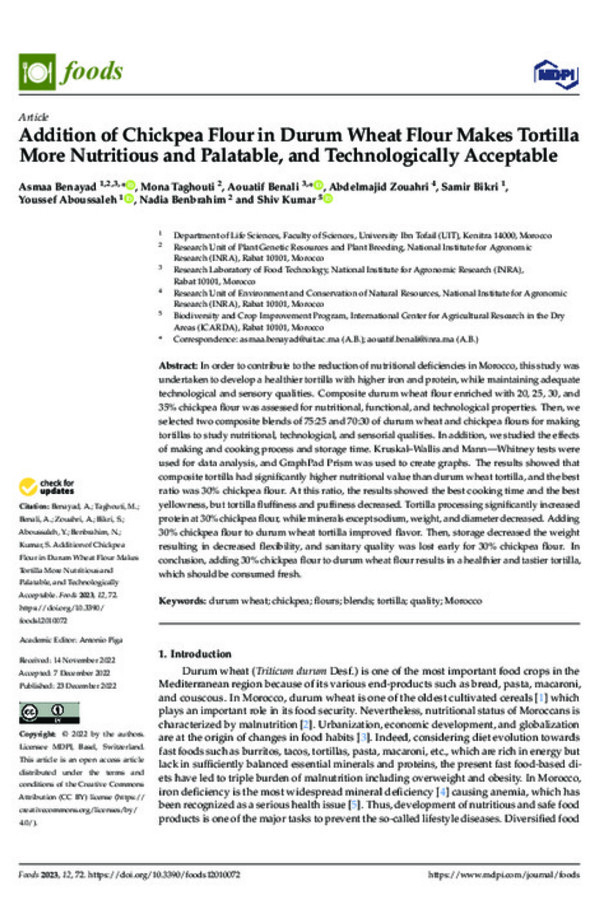
Addition of Chickpea Flour in Durum Wheat Flour Makes Tortilla More Nutritious and Palatable, and Technologically Acceptable
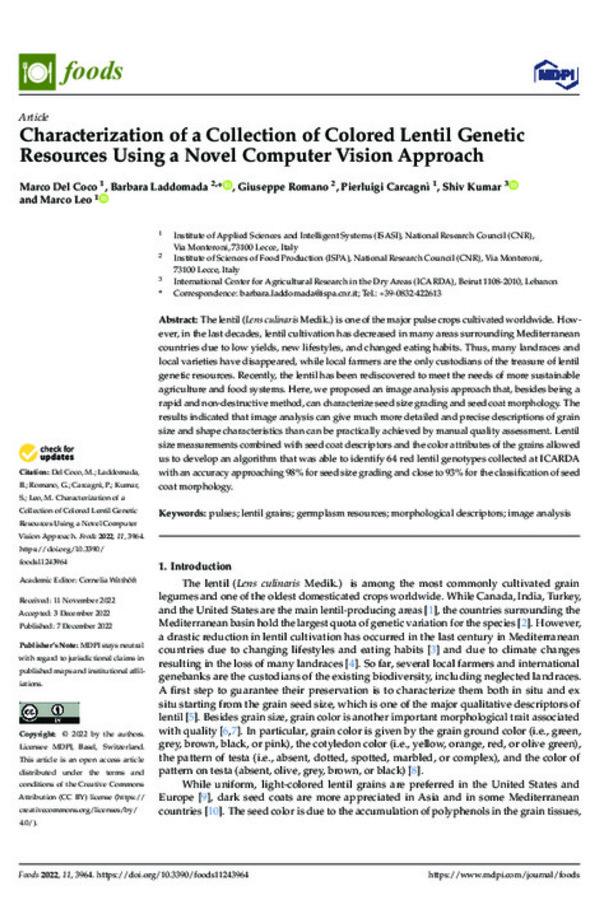
Characterization of a Collection of Colored Lentil Genetic Resources Using a Novel Computer Vision Approach
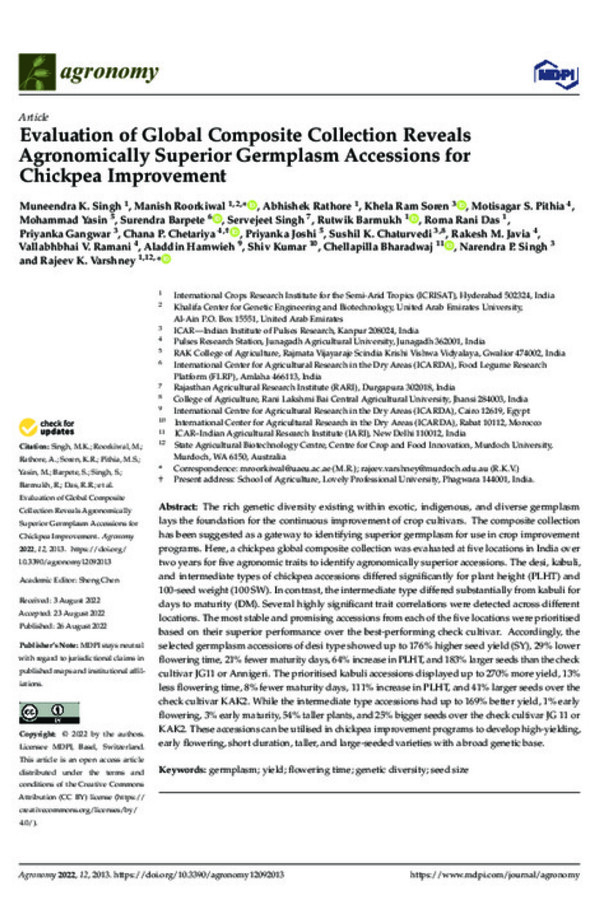
Evaluation of Global Composite Collection Reveals Agronomically Superior Germplasm Accessions for Chickpea Improvement
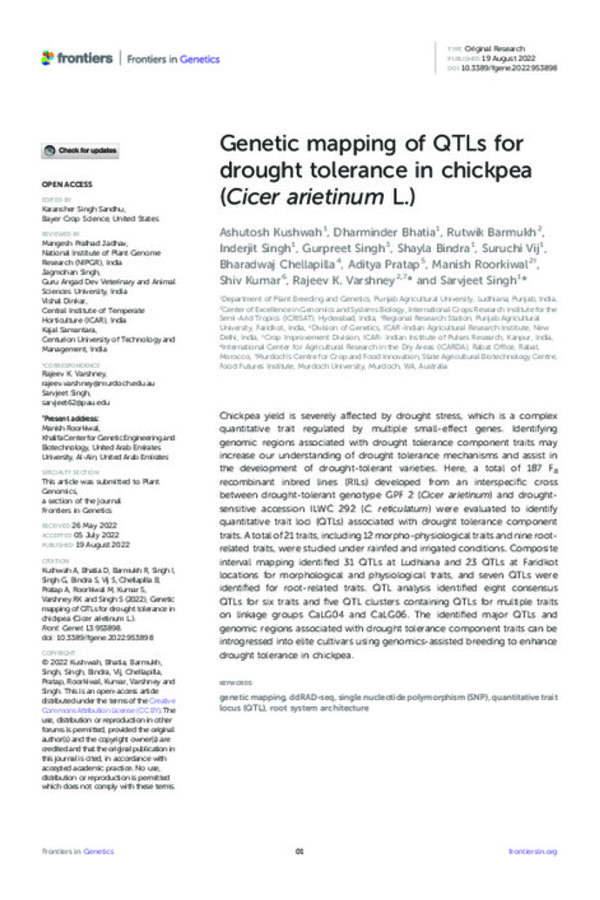
Genetic mapping of QTLs for drought tolerance in chickpea (Cicer arietinum L.)
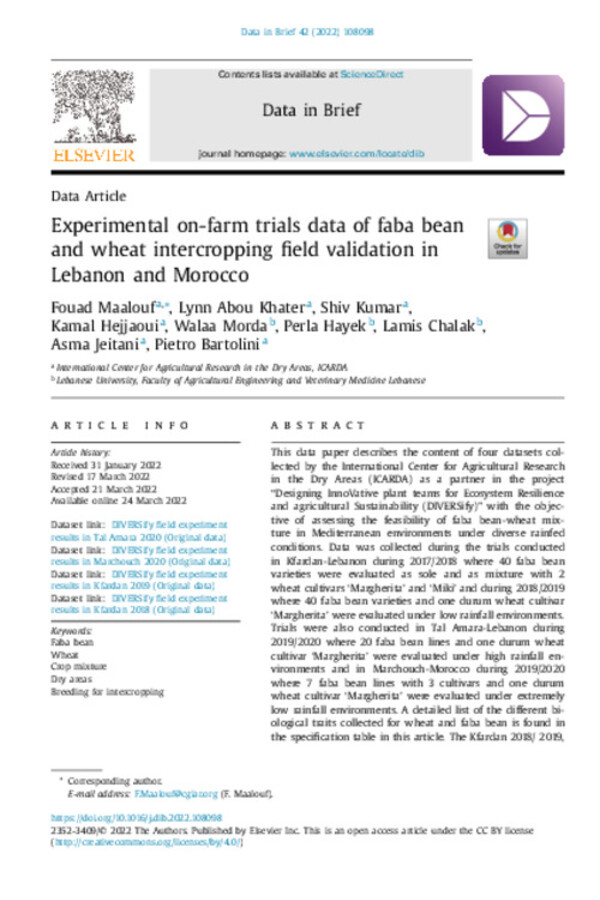
Experimental on-farm trials data of faba bean and wheat intercropping field validation in Lebanon and Morocco
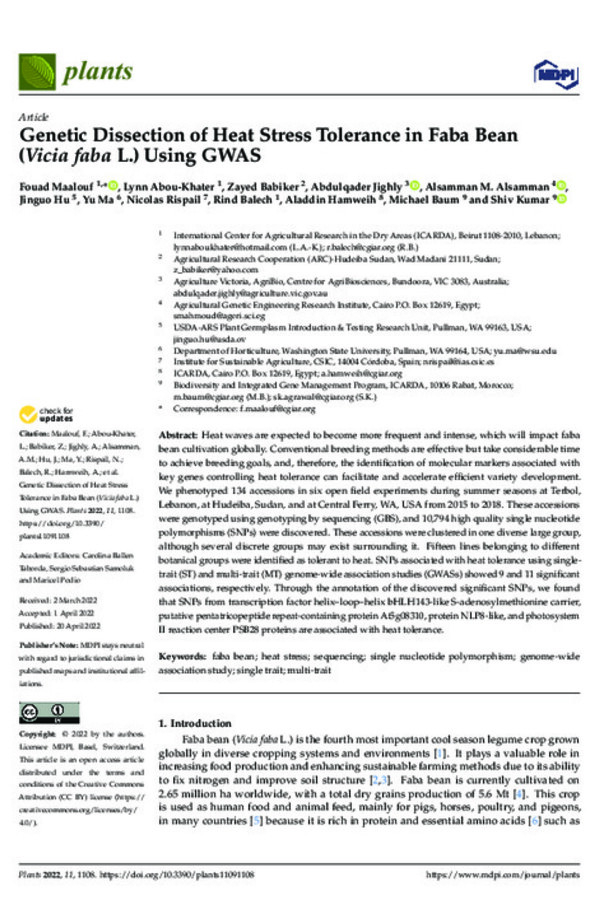
Genetic Dissection of Heat Stress Tolerance in Faba Bean (Vicia faba L.) Using GWAS
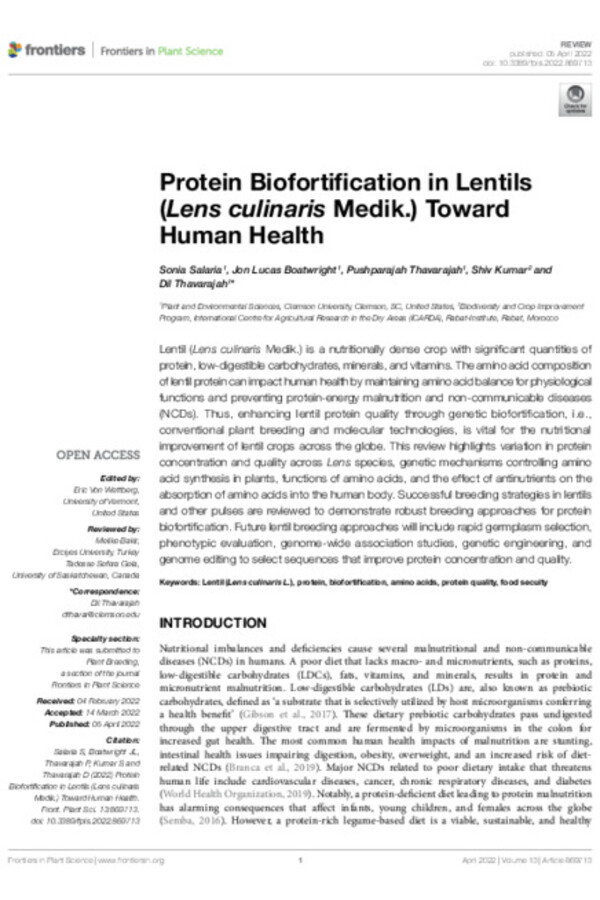
Protein Biofortification in Lentils (Lens culinaris Medik.) Toward Human Health

Towards the Development, Maintenance and Standardized Phenotypic Characterization of Single-Seed-Descent Genetic Resources for Chickpea
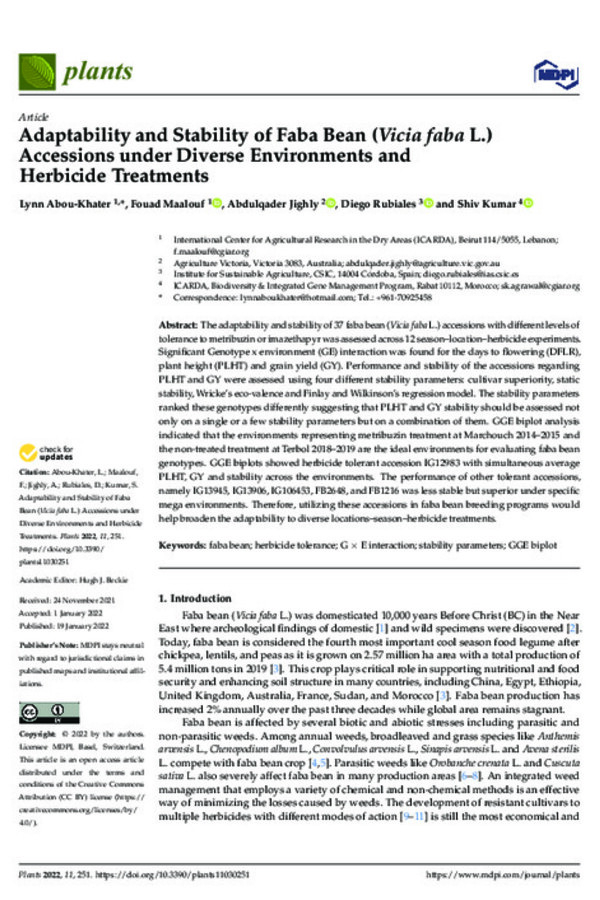
Adaptability and Stability of Faba Bean (Vicia faba L.) Accessions under Diverse Environments and Herbicide Treatments
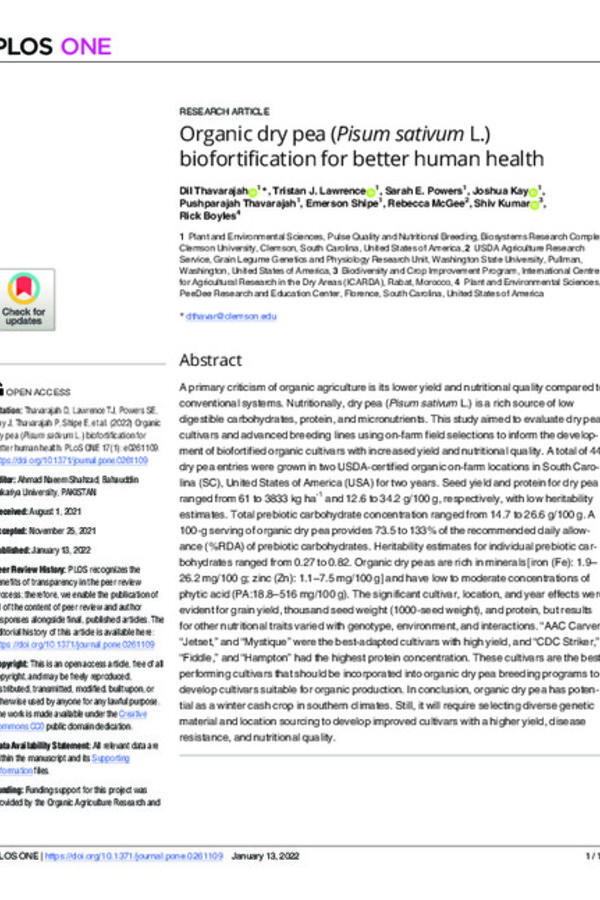
Organic dry pea (Pisum sativum L.) biofortification for better human health
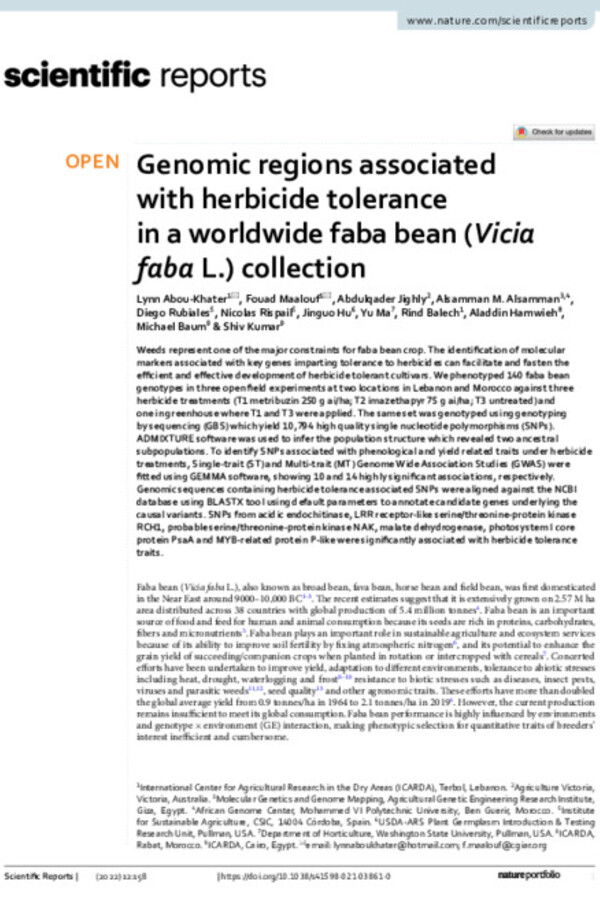
Genomic regions associated with herbicide tolerance in a worldwide faba bean (Vicia faba L.) collection
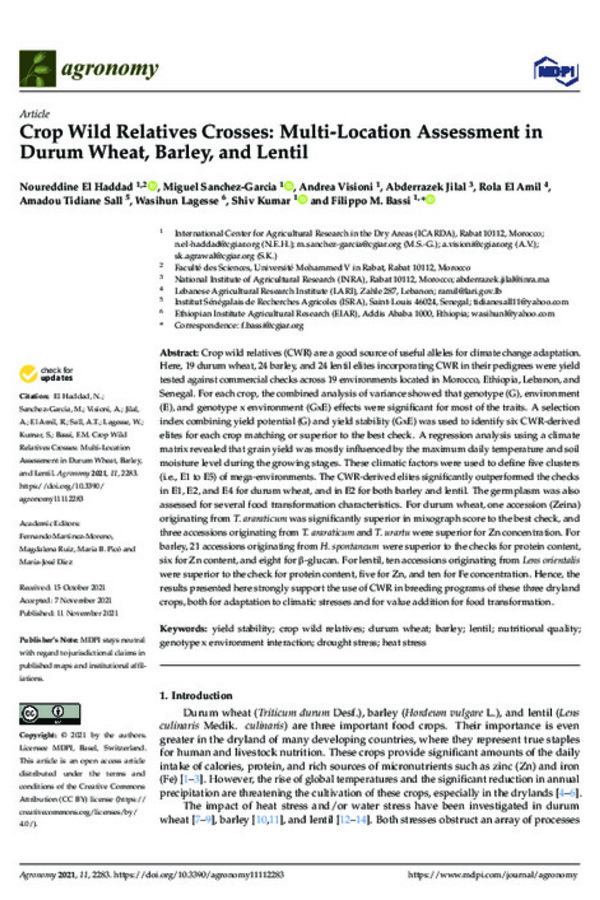
Crop Wild Relatives Crosses: Multi-Location Assessment in Durum Wheat, Barley, and Lentil
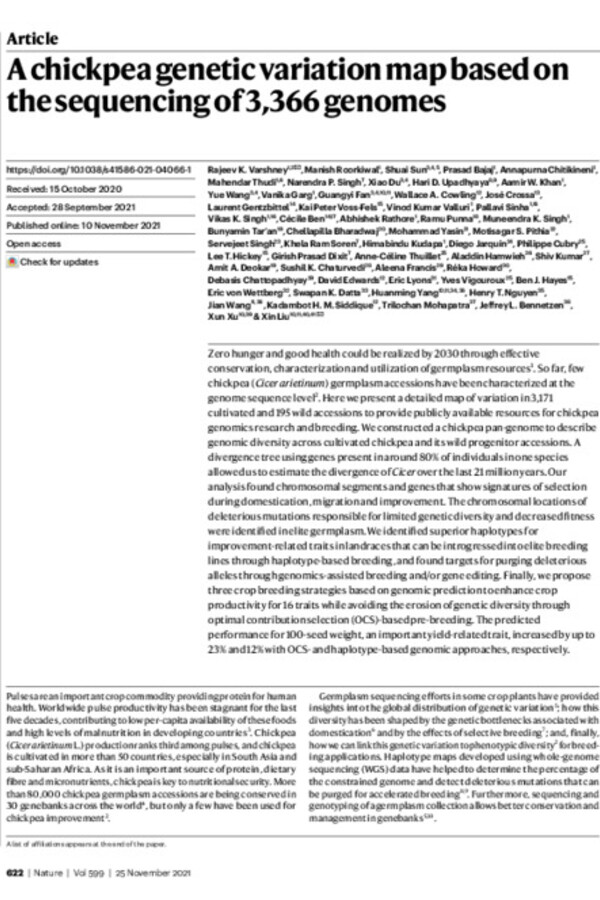
A chickpea genetic variation map based on the sequencing of 3,366 genomes
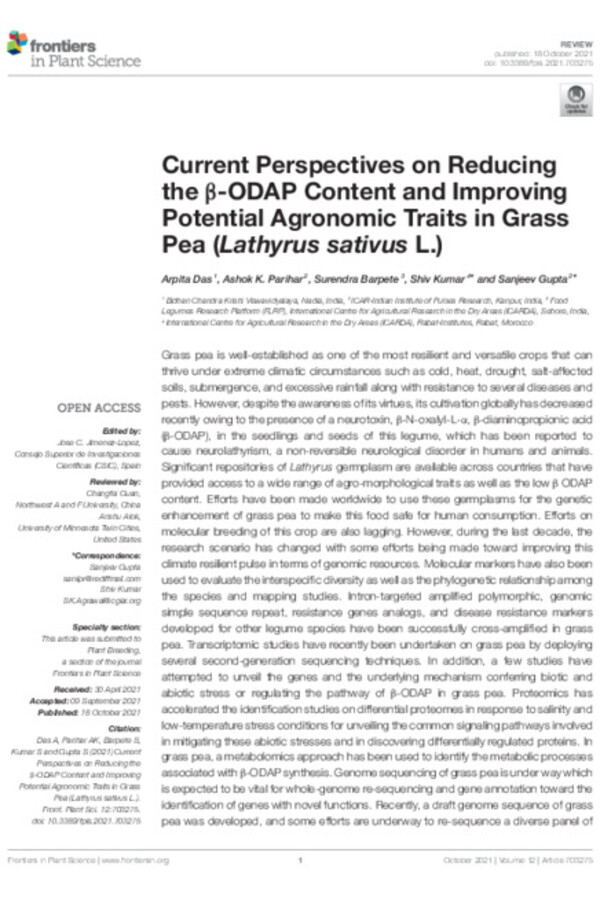
Current Perspectives on Reducing the β-ODAP Content and Improving Potential Agronomic Traits in Grass Pea (Lathyrus sativus L.)
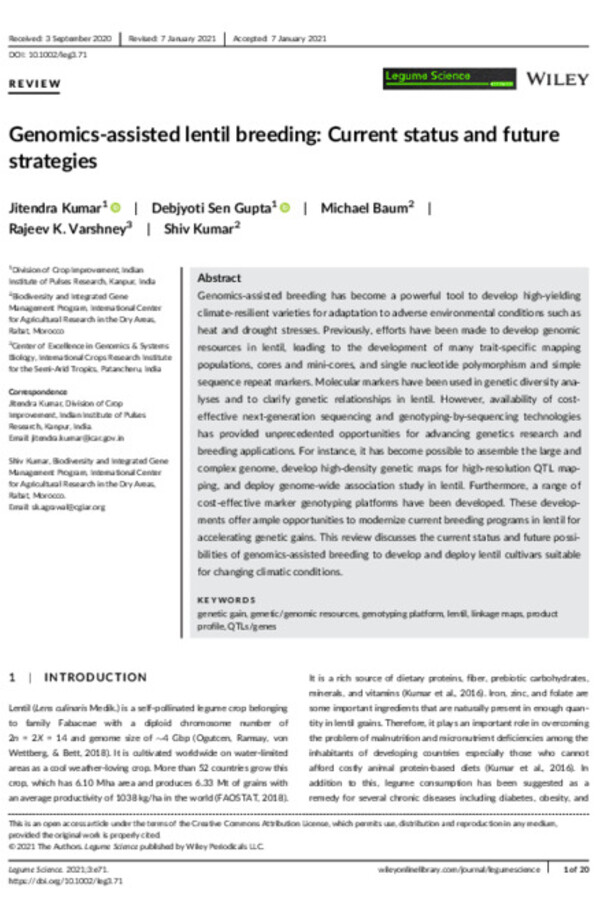
Genomics-assisted lentil breeding: Current status and futurestrategies
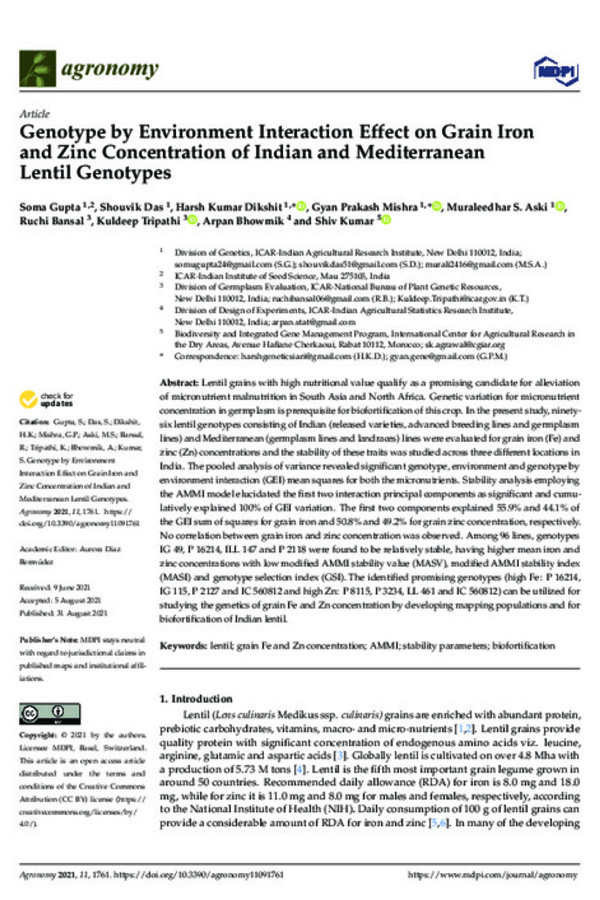
Genotype by Environment Interaction Effect on Grain Iron and Zinc Concentration of Indian and Mediterranean Lentil Genotypes
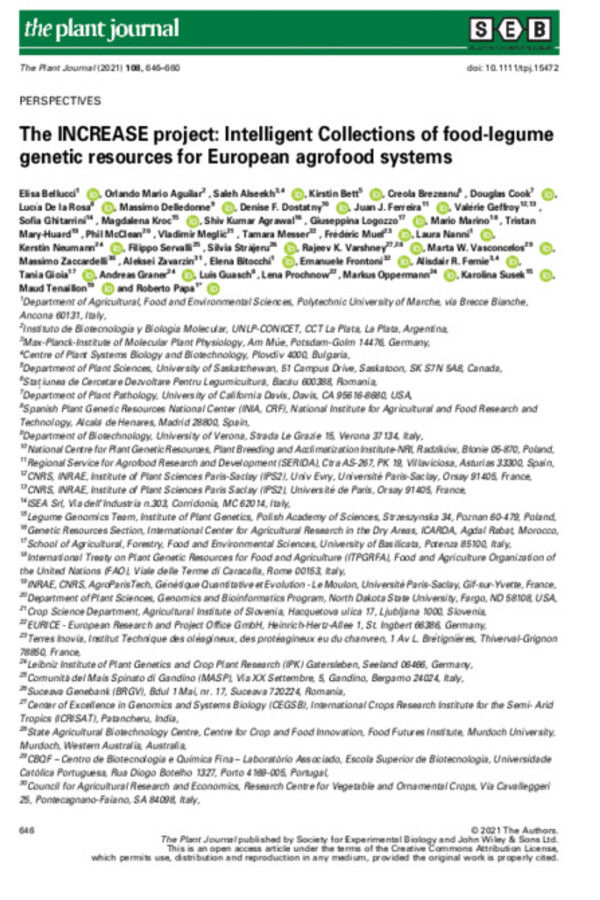
The INCREASE project: Intelligent Collections of food-legumegenetic resources for European agrofood systems
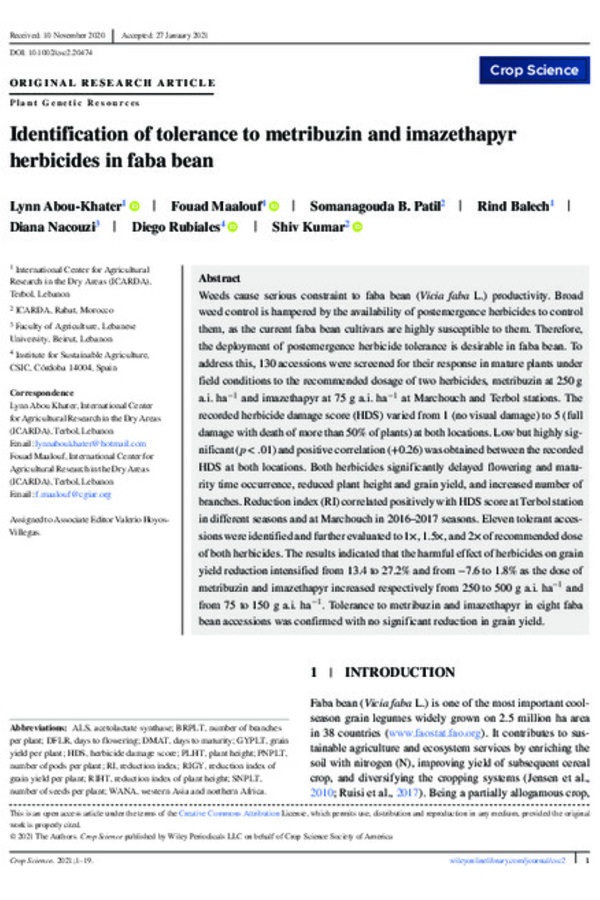
Identification of tolerance to metribuzin and imazethapyr herbicides in faba bean
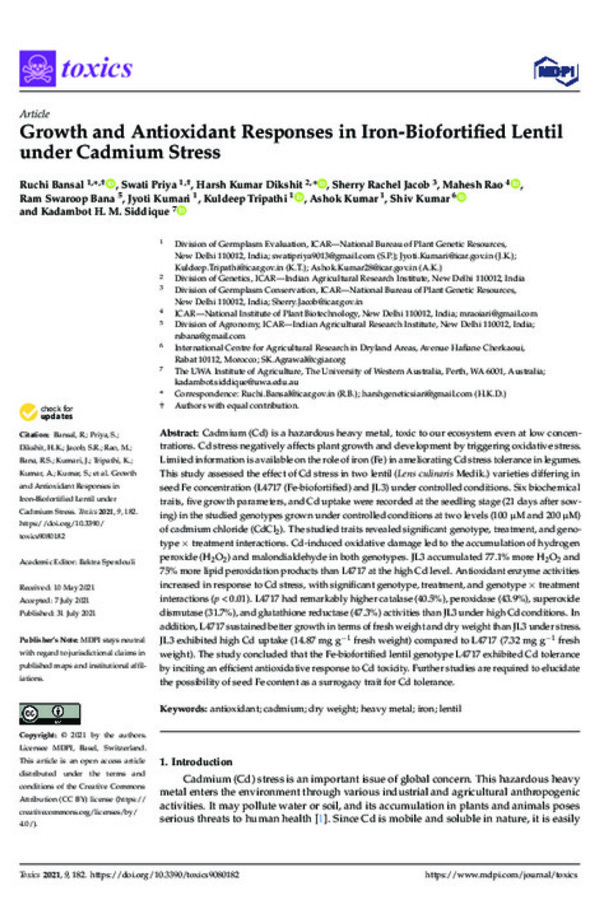
Growth and Antioxidant Responses in Iron-Biofortified Lentil under Cadmium Stress
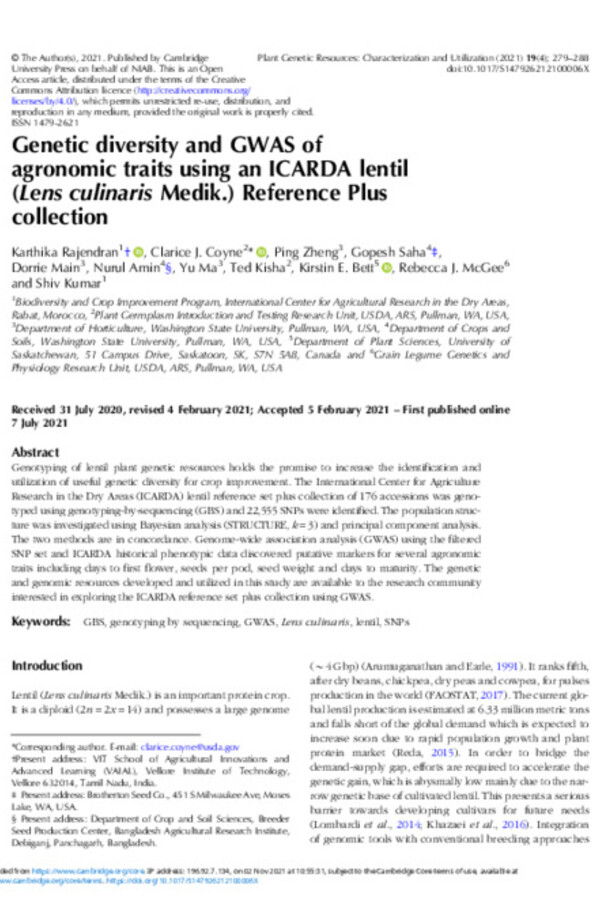
Genetic diversity and GWAS of agronomic traits using an ICARDA lentil (Lens culinaris Medik.) Reference Plus collection

‘Omics’ approaches in developing combined drought and heat tolerance in food crops

Identifying and validating SSR markers linked with rust resistance in lentil (Lens culinaris)
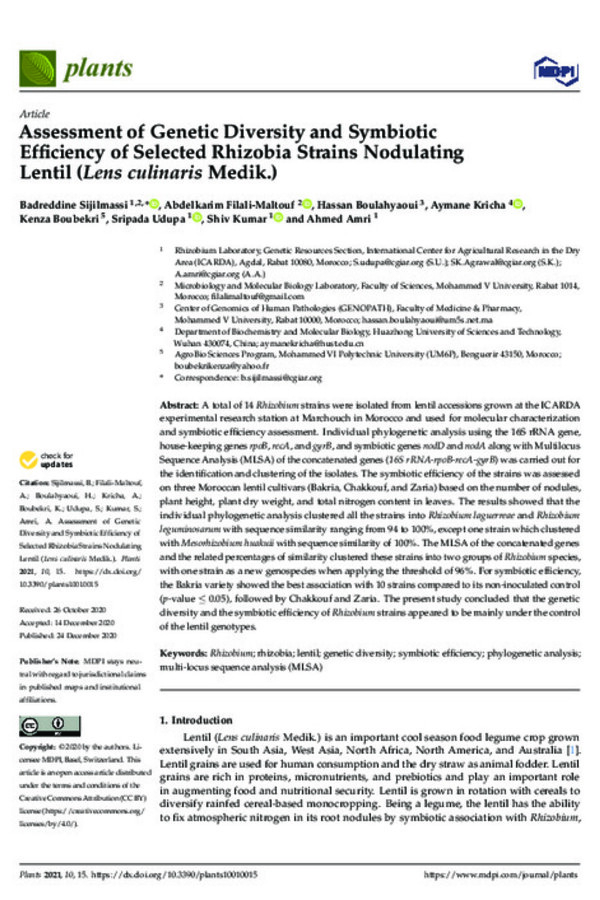
Assessment of Genetic Diversity and Symbiotic Efficiency of Selected Rhizobia Strains Nodulating Lentil (Lens culinaris Medik.)
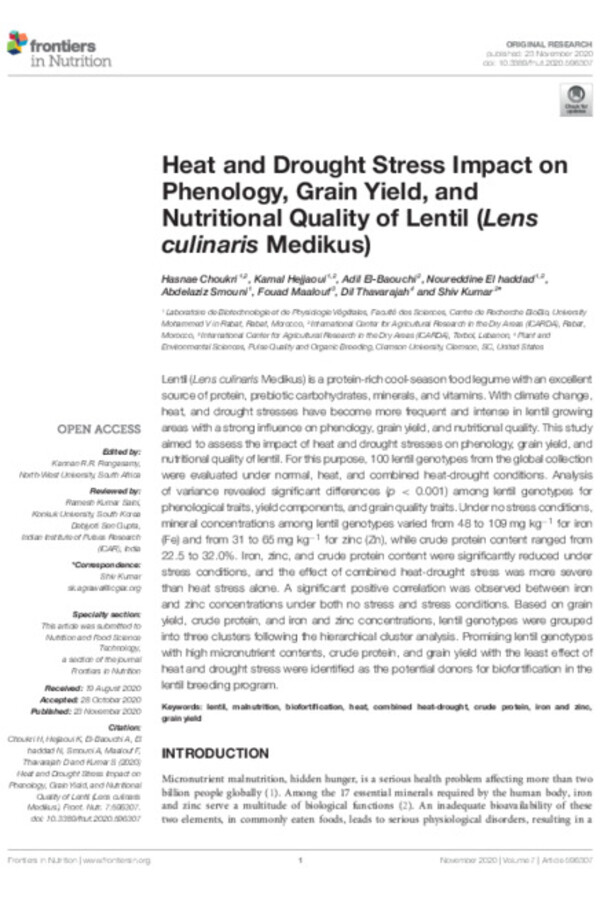
Heat and Drought Stress Impact on Phenology, Grain Yield, and Nutritional Quality of Lentil (Lens culinaris Medikus)
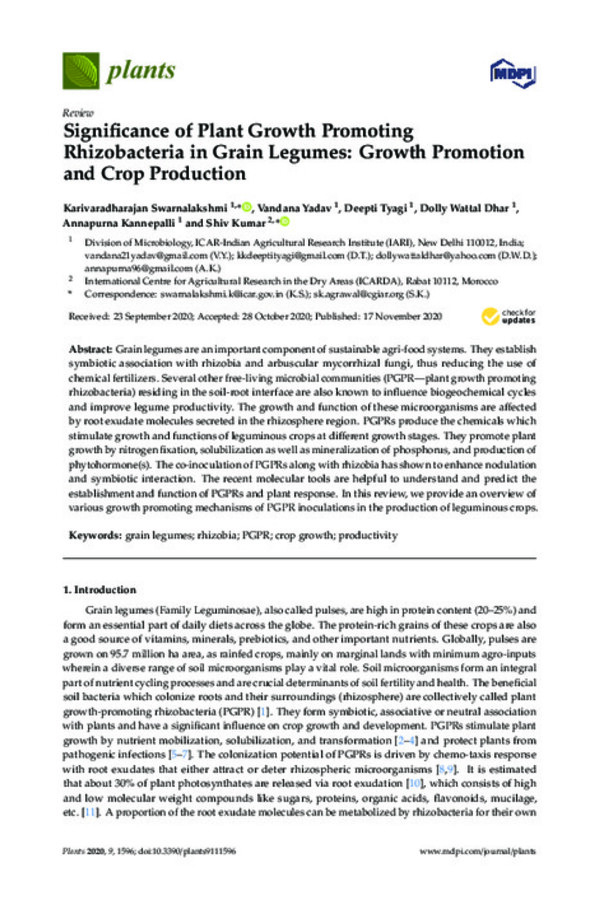
Significance of Plant Growth Promoting Rhizobacteria in Grain Legumes: Growth Promotion and Crop Production
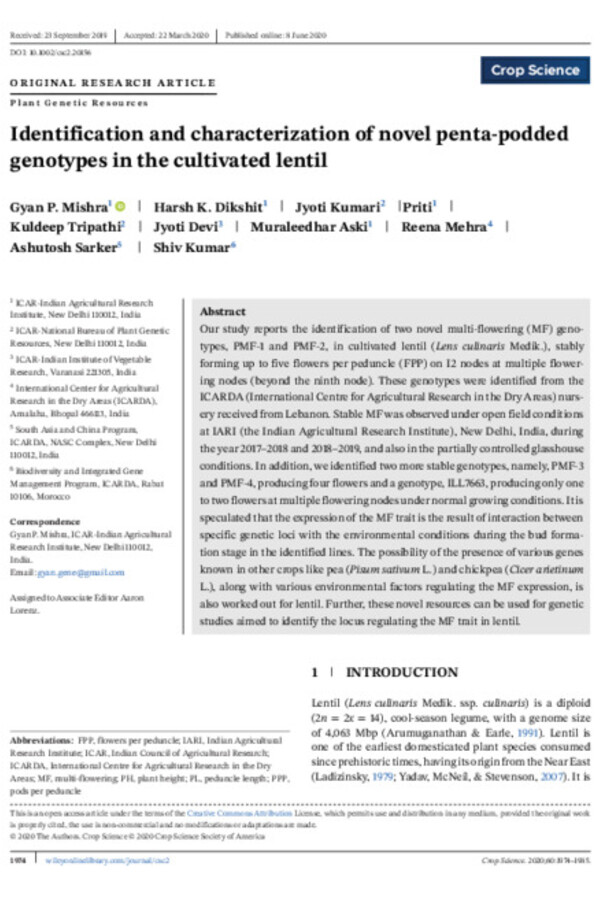
Identification and characterization of novel penta-podded genotypes in the cultivated lentil
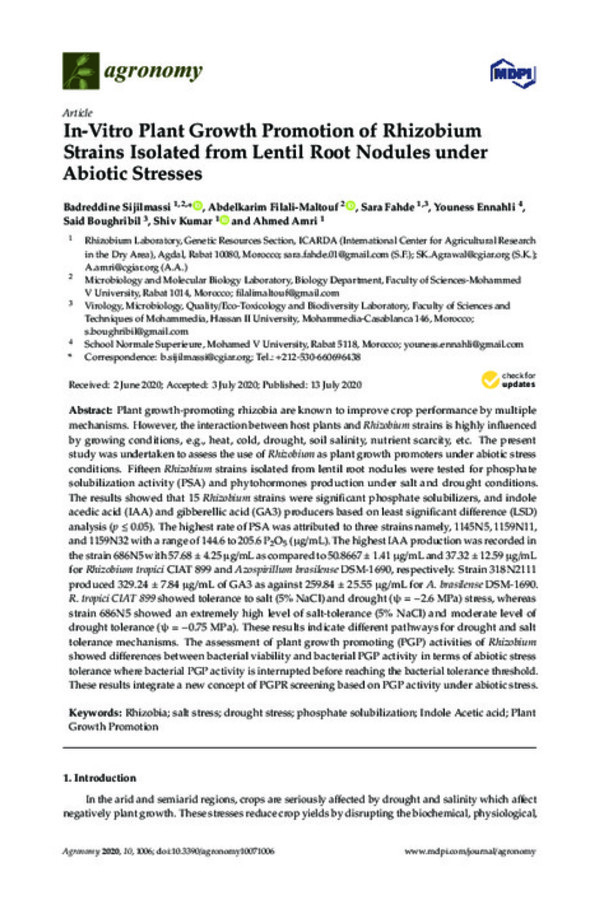
In-Vitro Plant Growth Promotion of Rhizobium Strains Isolated from Lentil Root Nodules under Abiotic Stresses

Potential and limits of exploitation of crop wild relatives for pea, lentil, and chickpea improvement
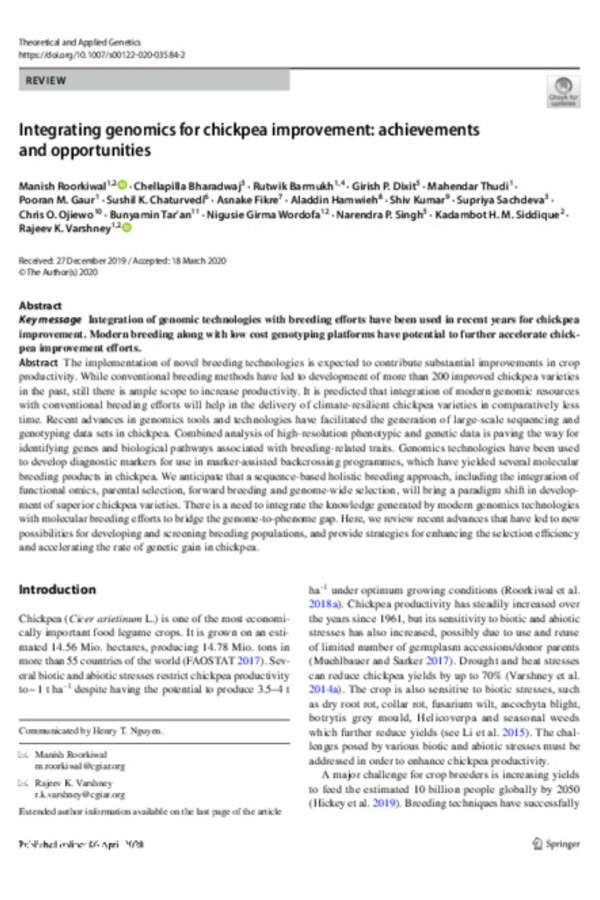
Integrating genomics for chickpea improvement: achievements and opportunities
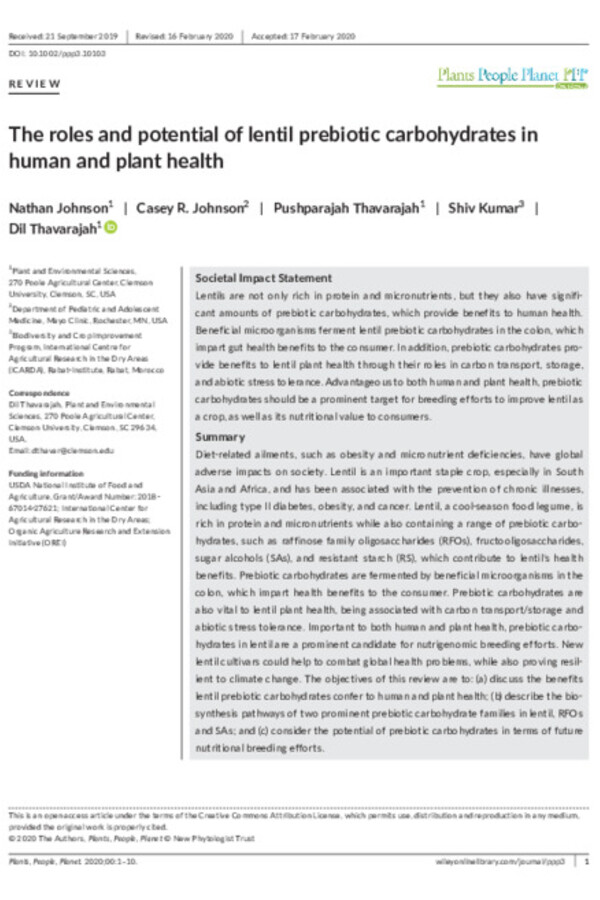
The roles and potential of lentil prebiotic carbohydrates in human and plant health
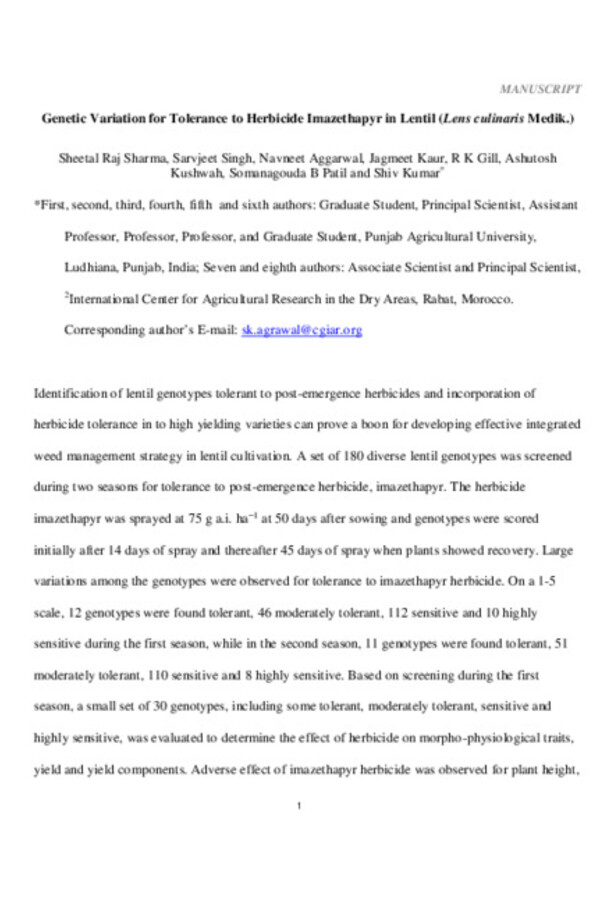
Genetic Variation for Tolerance to Herbicide Imazethapyr in Lentil (Lens culinaris Medik.)
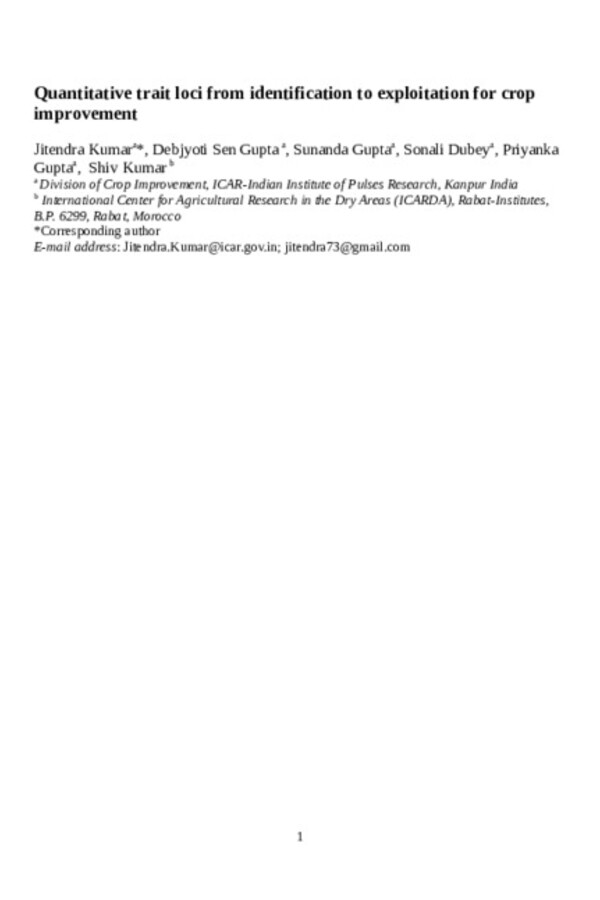
Quantitative trait loci from identification to exploitation for crop improvement

Relevance of limited-transpiration trait for lentil (Lens culinaris Medik.) in South Asia
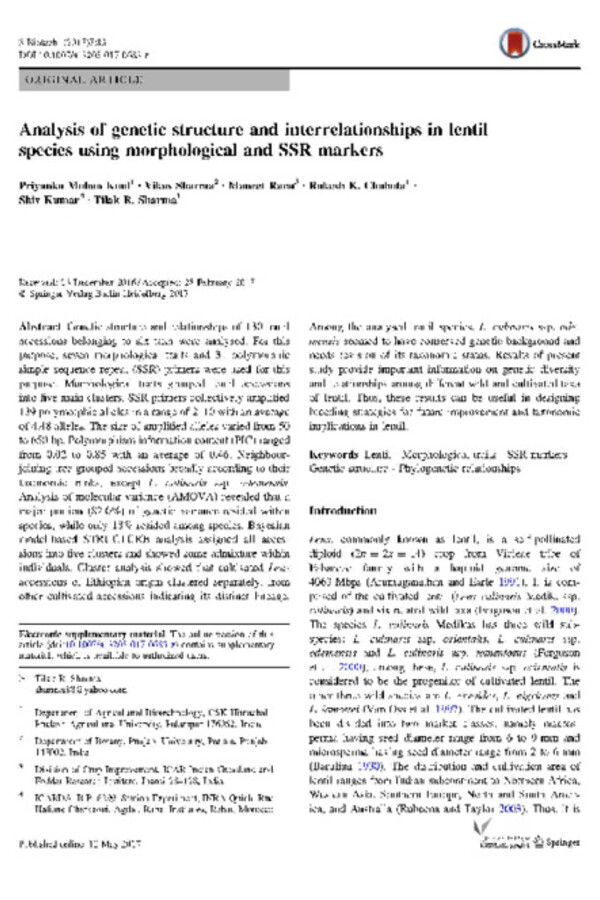
Analysis of genetic structure and interrelationships in lentil species using morphological and SSR markers
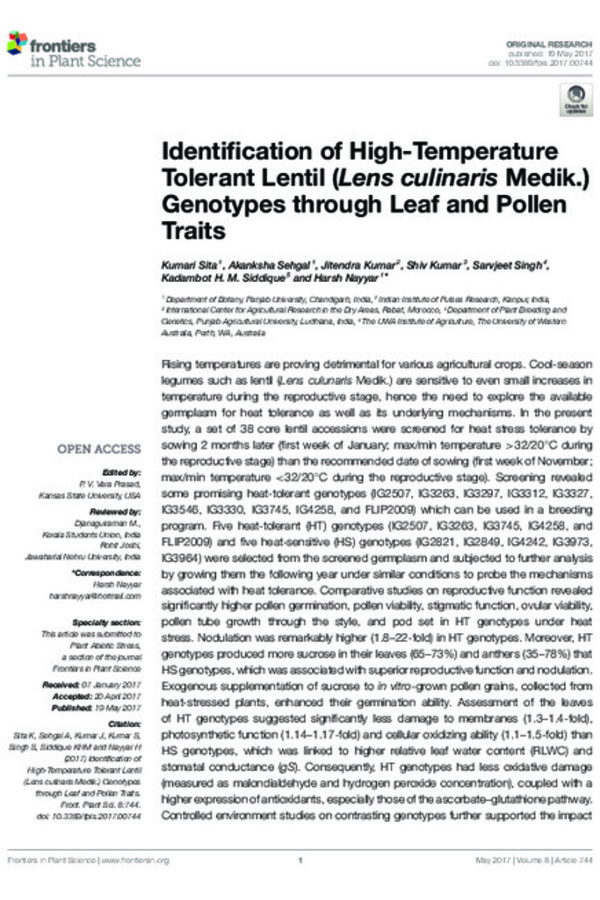
Identification of High-Temperature Tolerant Lentil (Lens culinaris Medik.) Genotypes through Leaf and Pollen Traits

Microsatellite marker-based genetic diversity analysis of elite lentil lines differing in grain iron and zinc concentration

Breeding strategies to improve lentil for diverse agro-ecological environments
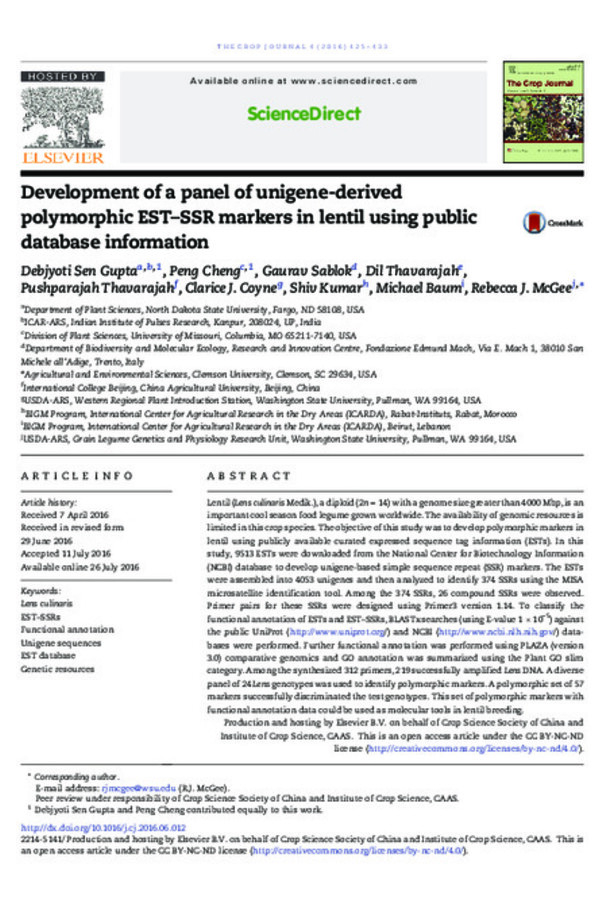
Development of a panel of unigene derived polymorphic EST-SSR markers in lentil using public database information
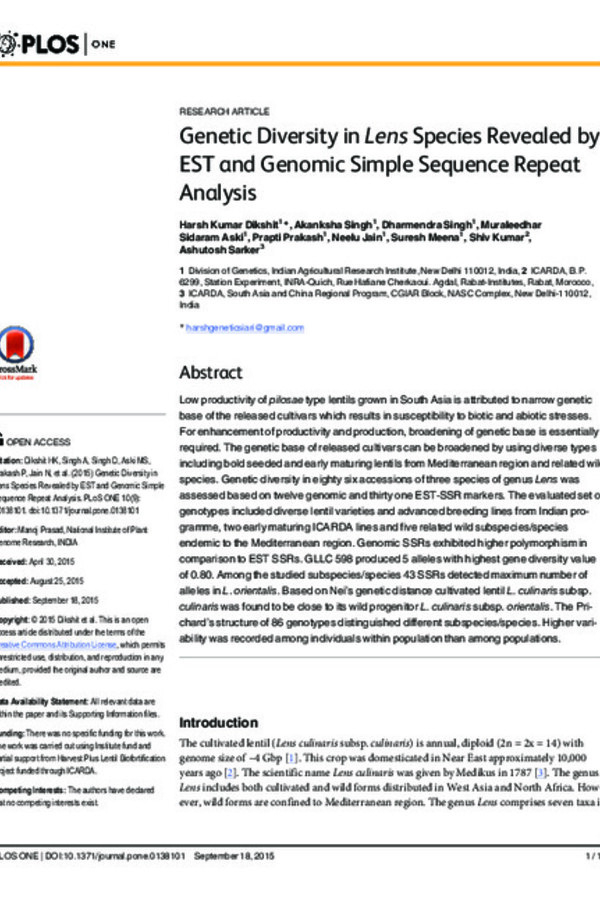
Genetic Diversity in Lens Species Revealed by EST and Genomic Simple Sequence Repeat Analysis
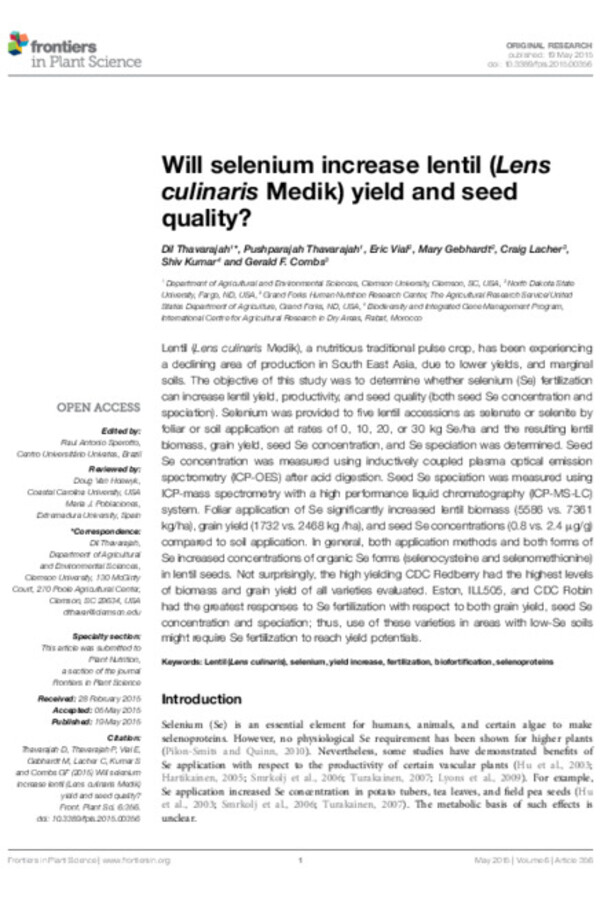
Will selenium increase lentil (Lens culinaris Medik) yield and seed quality?
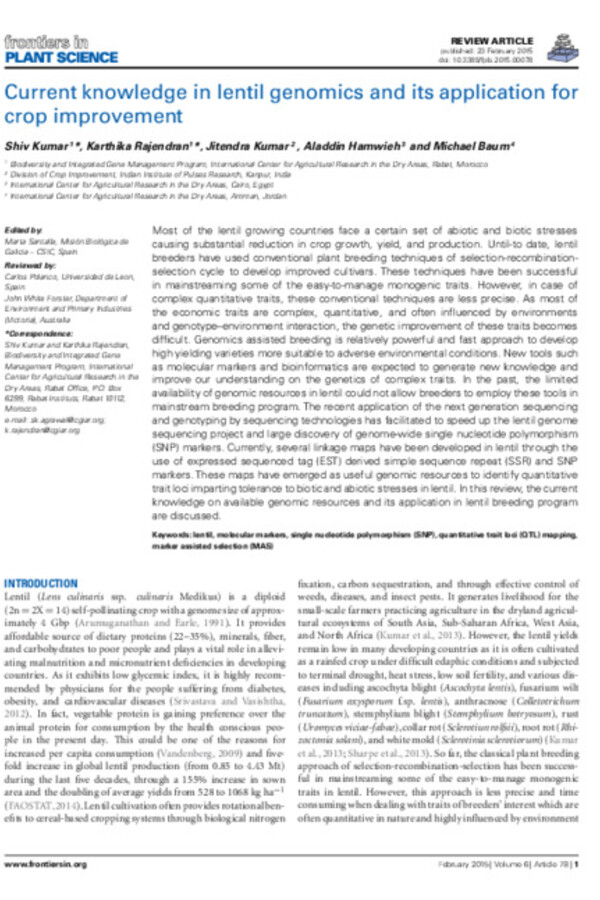
Current knowledge in lentil genomics and its application for crop improvement
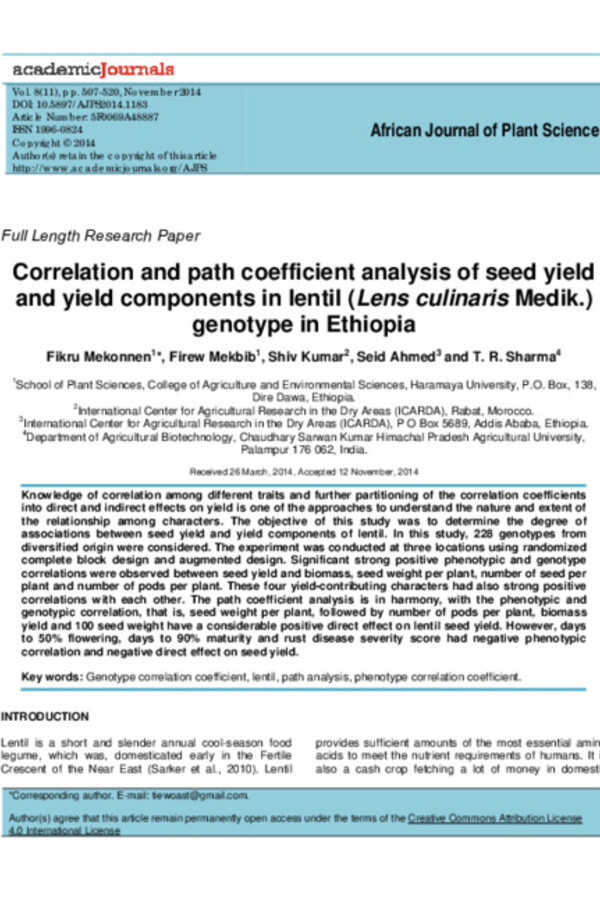
Correlation and path coefficient analysis of seed yield and yield components in Lentil (Lens culinaris Medik) genotypes in Ethiopia

Genetic enhancement of food legumes for nutritional security and sustainable cereal-based cropping systems
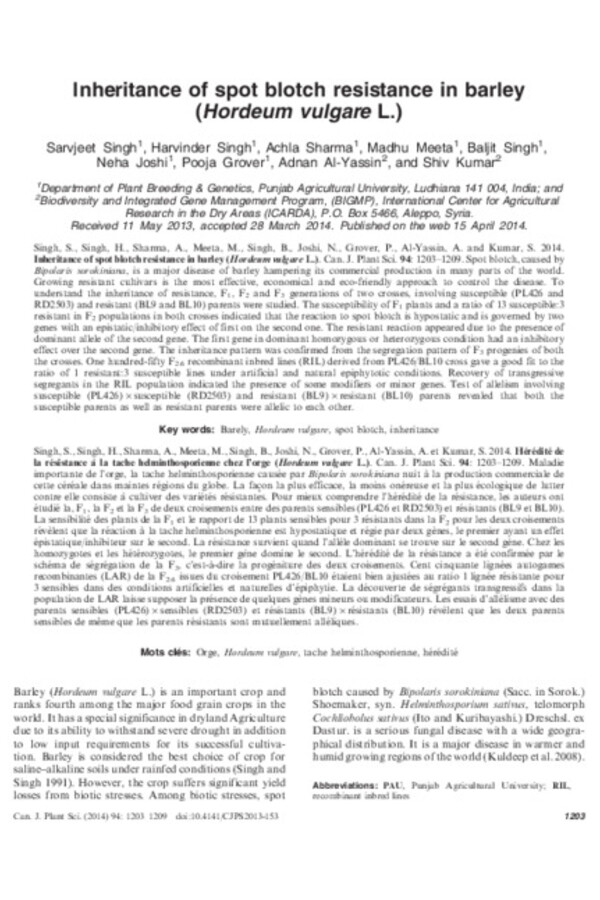
Inheritance of spot blotch resistance in barley (Hordeum vulgare L.)
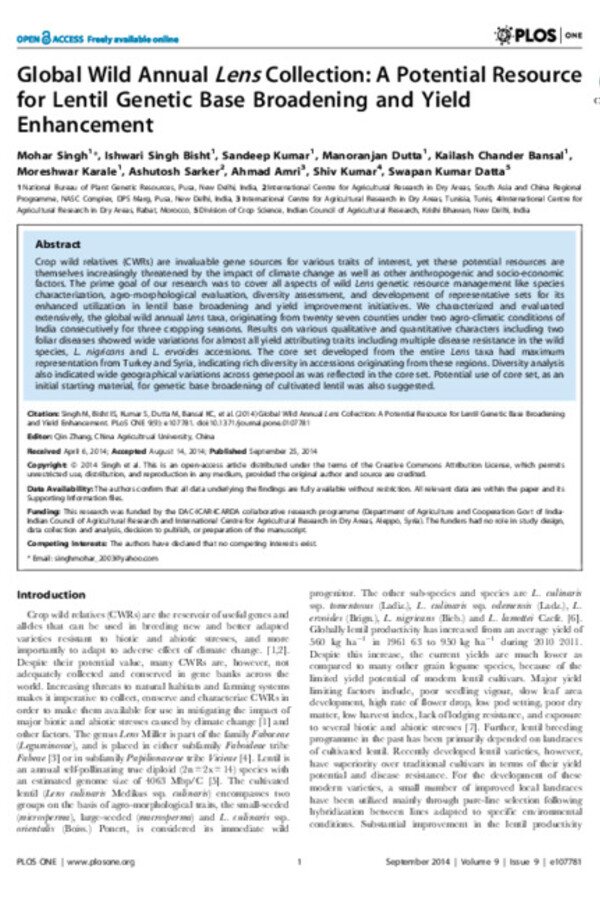
Global Wild Annual Lens Collection: A Potential Resource for Lentil Genetic Base Broadening and Yield Enhancement
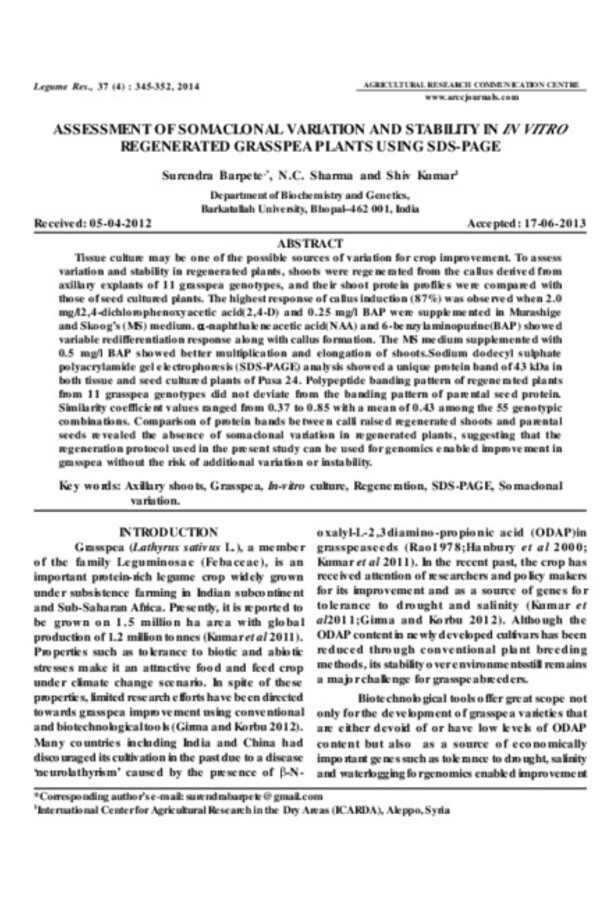
Assessment of somaclonal variation and stability in in vitro regenerated grass pea plants using SDS-PAGE
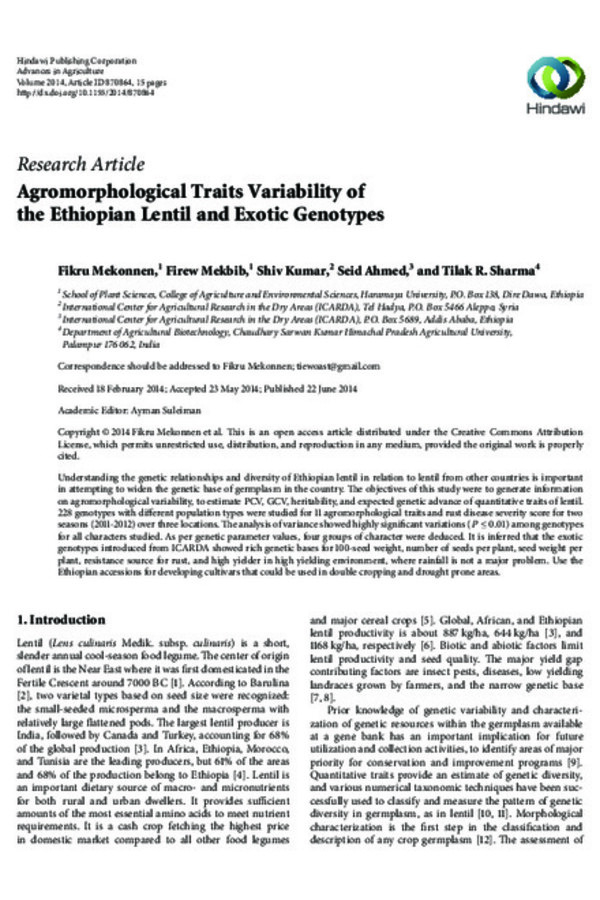
Agromorphological Traits Variability of the Ethiopian Lentil and Exotic Genotypes
![DEVELOPMENT OF SUPER EARLY GENOTYPES IN GREENGRAM [VIGNA RADIATA (L.)Wilczek] DEVELOPMENT OF SUPER EARLY GENOTYPES IN GREENGRAM [VIGNA RADIATA (L.)Wilczek]](/sites/default/files/styles/display_06_verical/public/feeds/publications/OI6C8FzM.jpg?h=49e7f74b&itok=MfV3ITcM)
DEVELOPMENT OF SUPER EARLY GENOTYPES IN GREENGRAM [VIGNA RADIATA (L.)Wilczek]
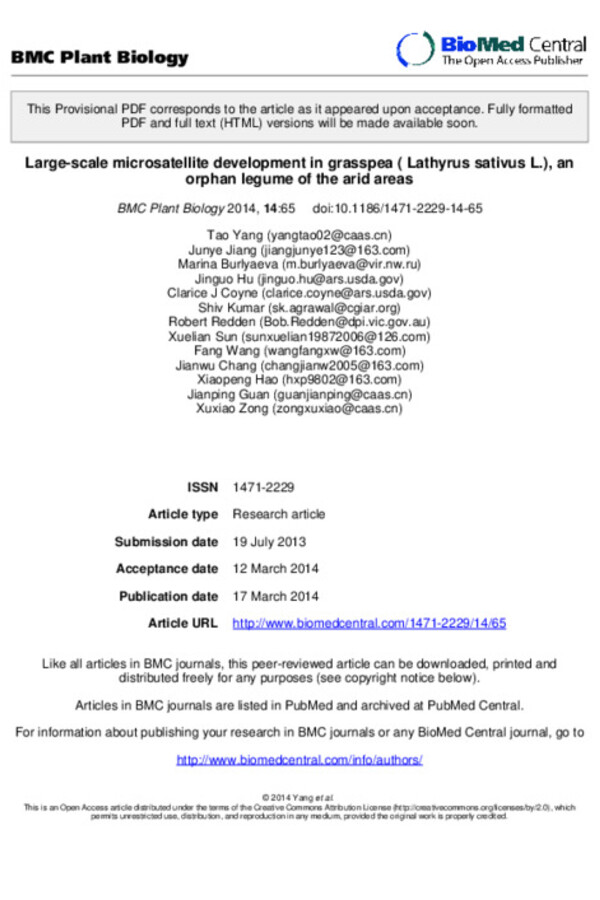
Large-scale microsatellite development in grasspea ( Lathyrus sativus L.), an orphan legume of the arid areas
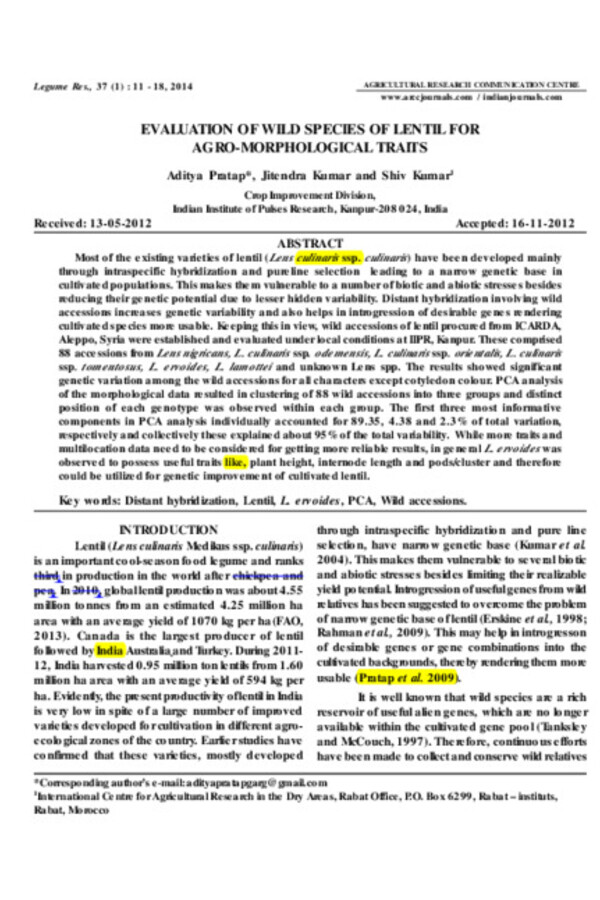
Evaluation of wild species of lentil for agro-morphological traits
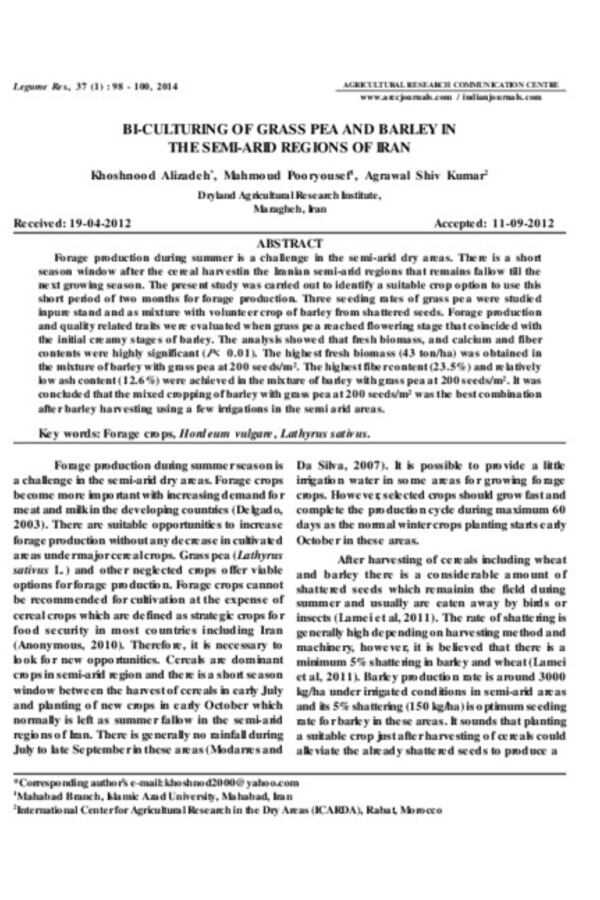
BI-CULTURING OF GRASS PEA AND BARLEY IN THE SEMI-ARID REGIONS OF IRAN
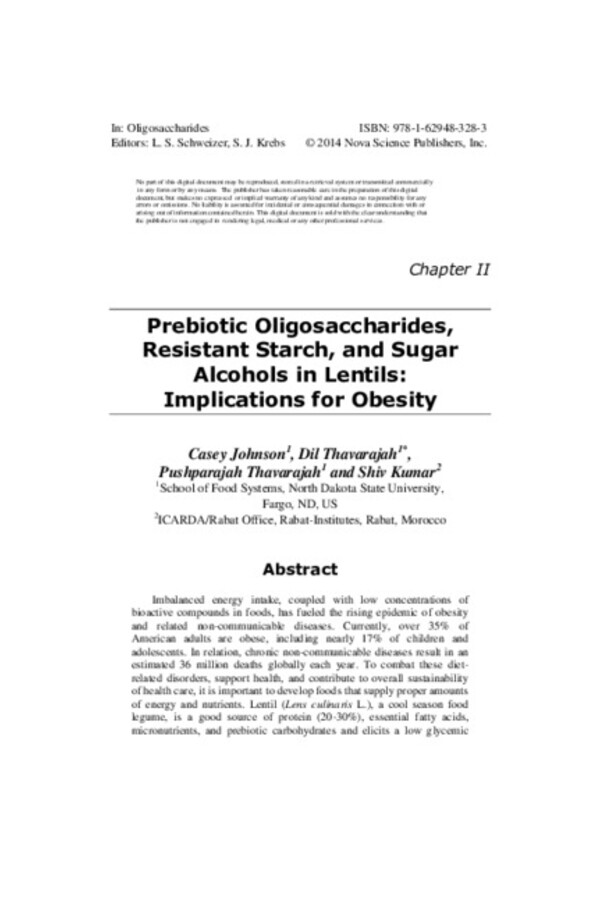
Prebiotic Oligosaccharides, Resistant Starch and Sugar Alcohols in Lentils: Implications for Obesity

Diversification of indigenous gene- pool by using exotic 5 germplasm in lentil (Lens culinaris Medikus subsp. culinaris)
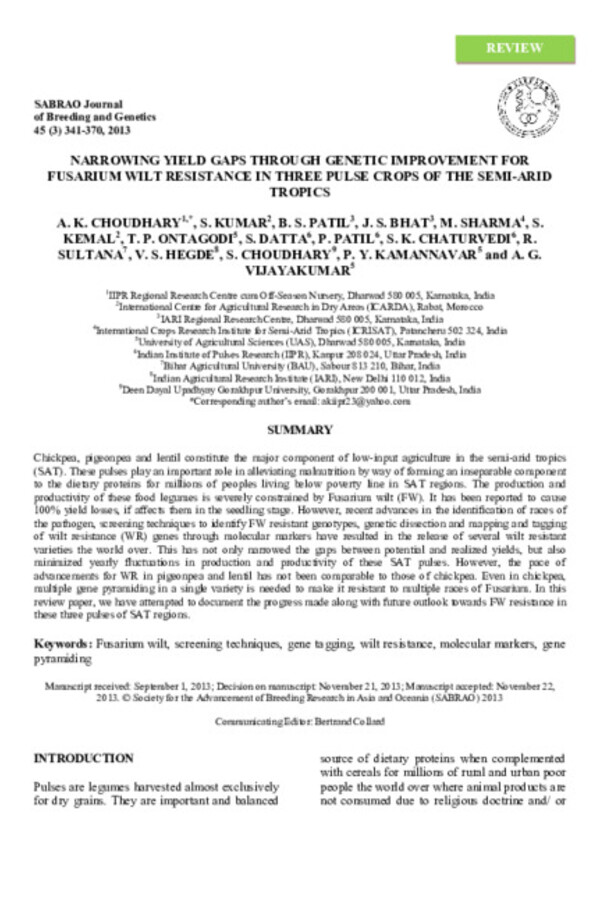
NARROWING YIELD GAPS THROUGH GENETIC IMPROVEMENT FOR FUSARIUM WILT RESISTANCE IN THREE PULSE CROPS OF THE SEMI-ARID TROPICS
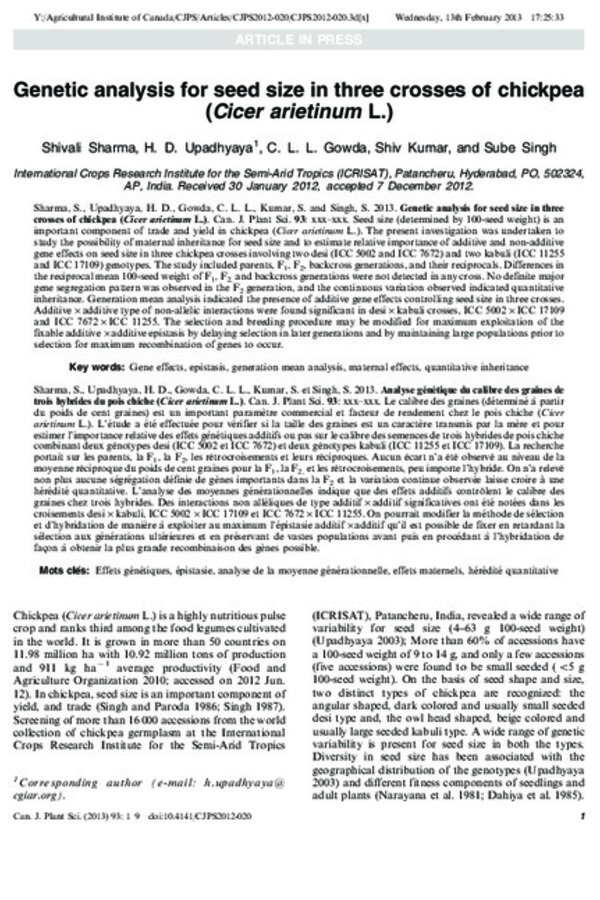
Genetic analysis for seed size in three crosses of chickpea (Cicer arietinum L.)

Screening of kabuli chickpea (Cicer arietinum L.) germplasm resistant to Botrytis Gray Mold in Bangladesh

Lentils (Lens Culinaris L.): Linking whole foods for better human health
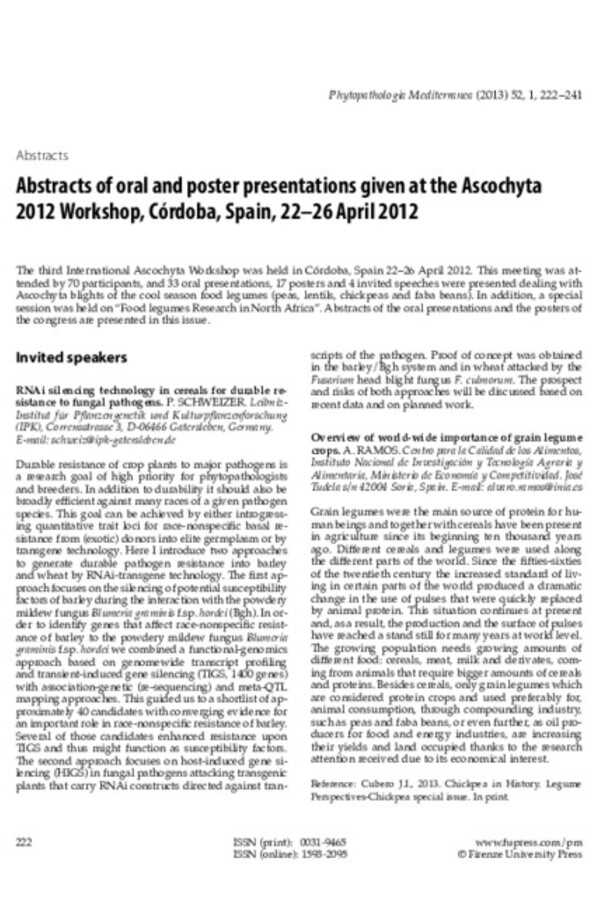
Combining Ascochyta blight resistance and high yield in lentil cultivars
![Inheritance of Protruded Stigma in Black Gram [Vigna mungo (L.) Hepper] Inheritance of Protruded Stigma in Black Gram [Vigna mungo (L.) Hepper]](/sites/default/files/styles/display_06_verical/public/feeds/publications/068f976172184d0d32c90b8c1751d0e2.jpeg?h=fa471421&itok=xhxWZqz5)
Inheritance of Protruded Stigma in Black Gram [Vigna mungo (L.) Hepper]



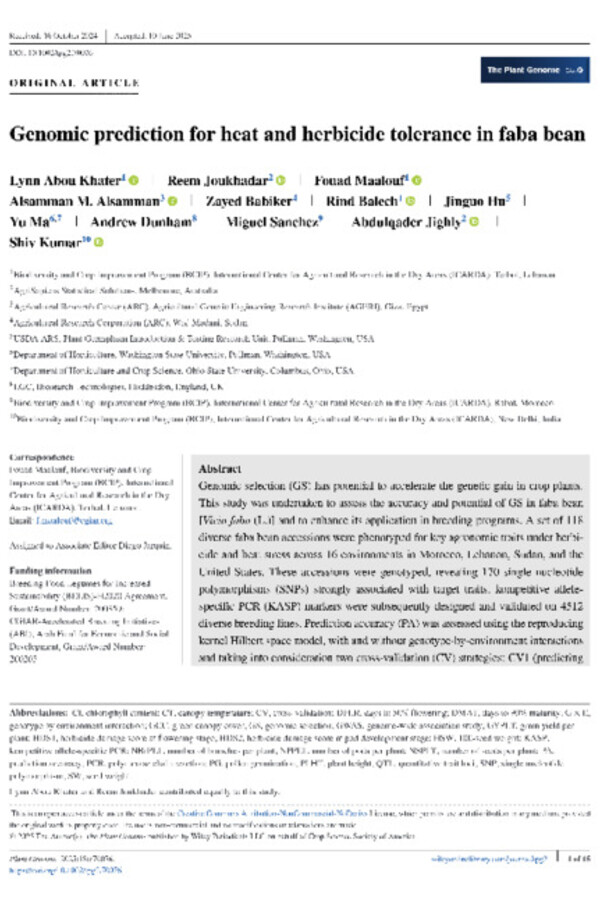

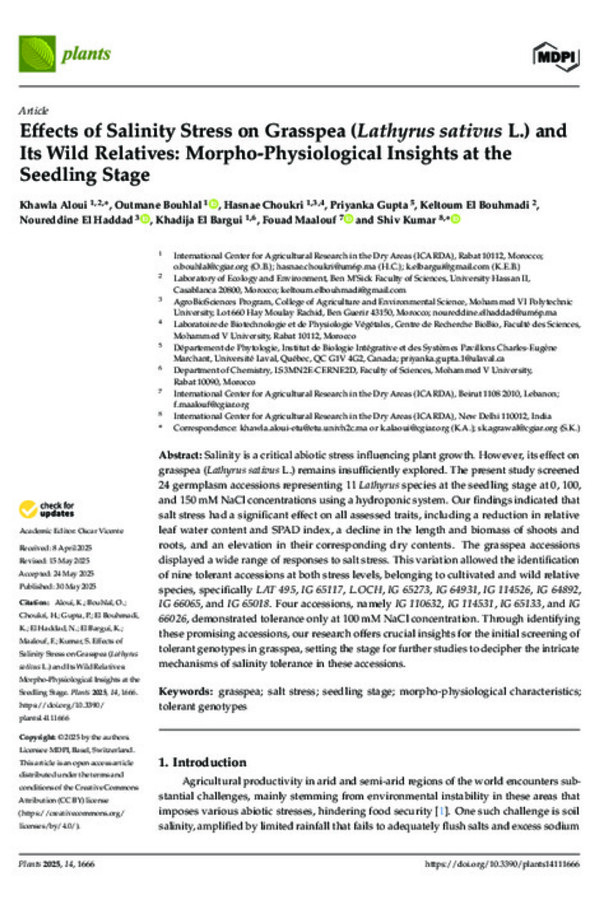
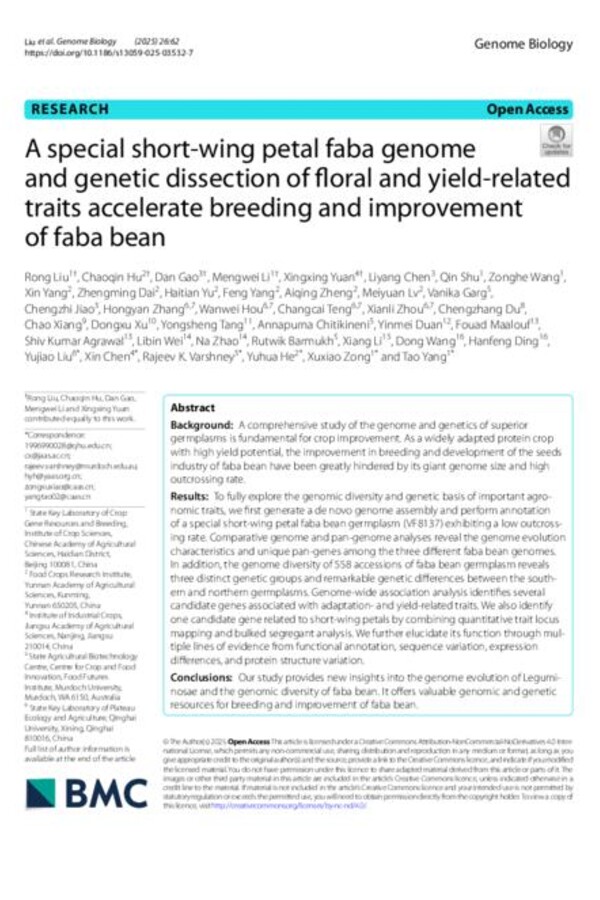

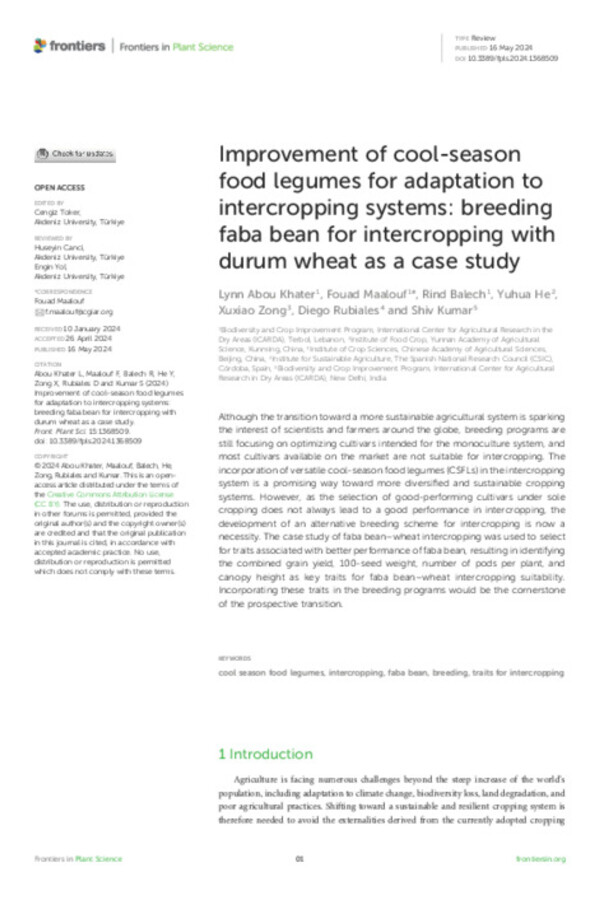
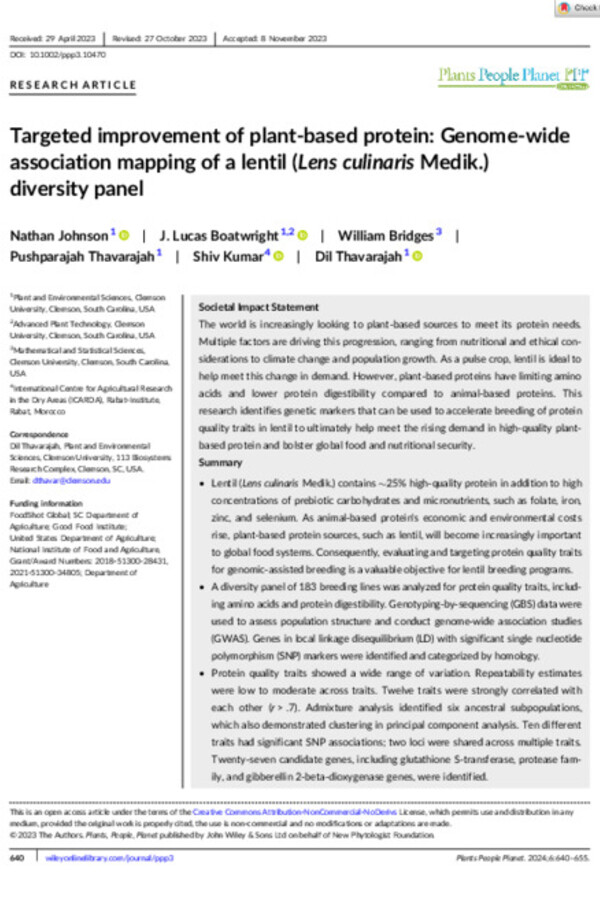

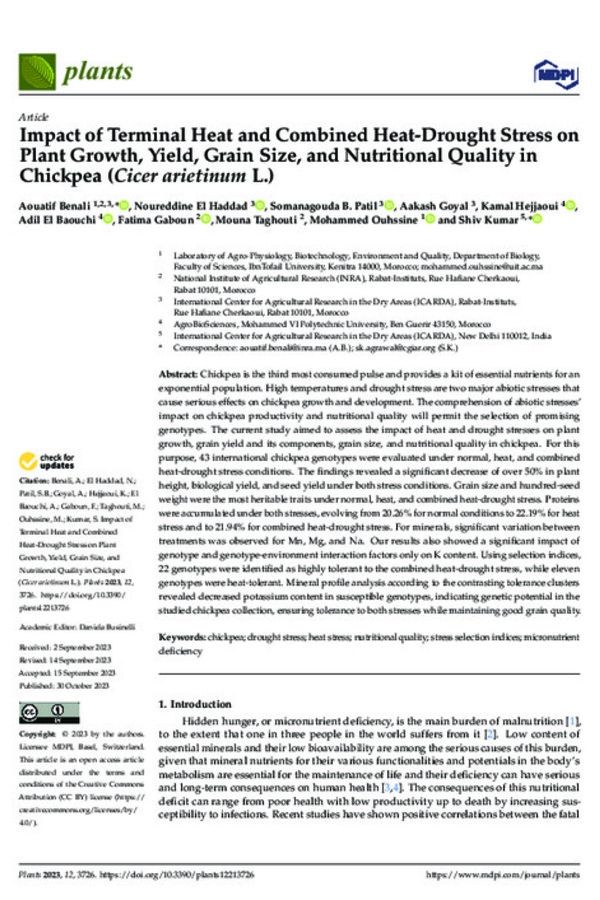
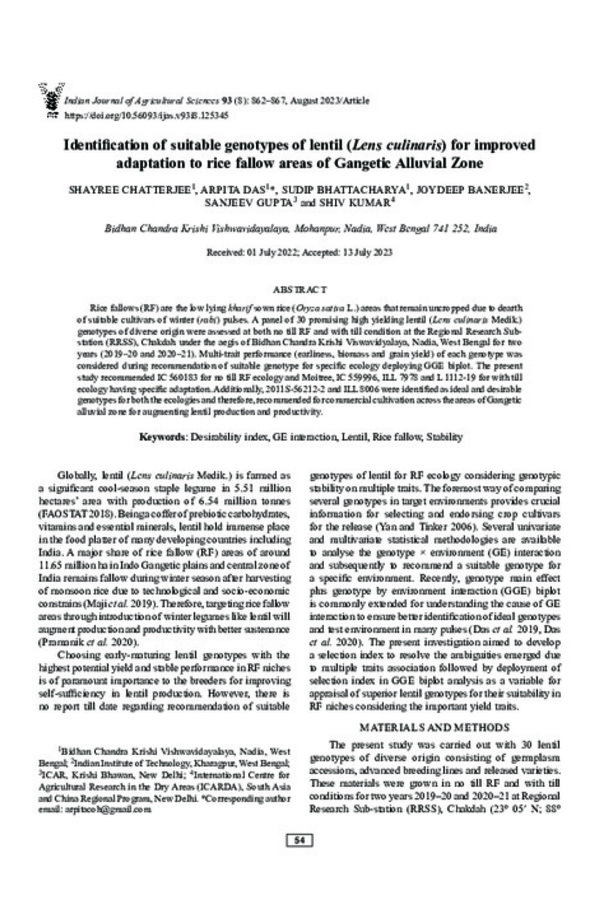
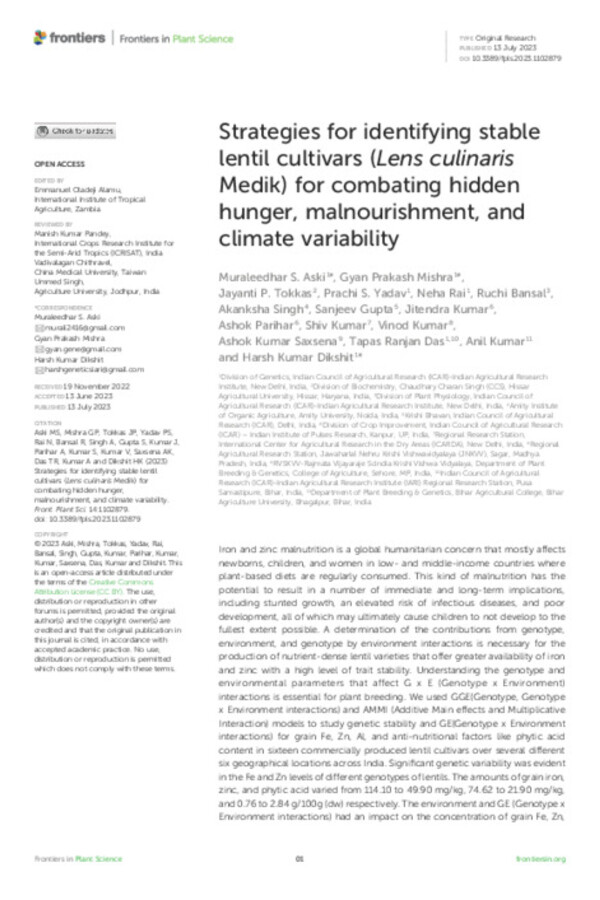
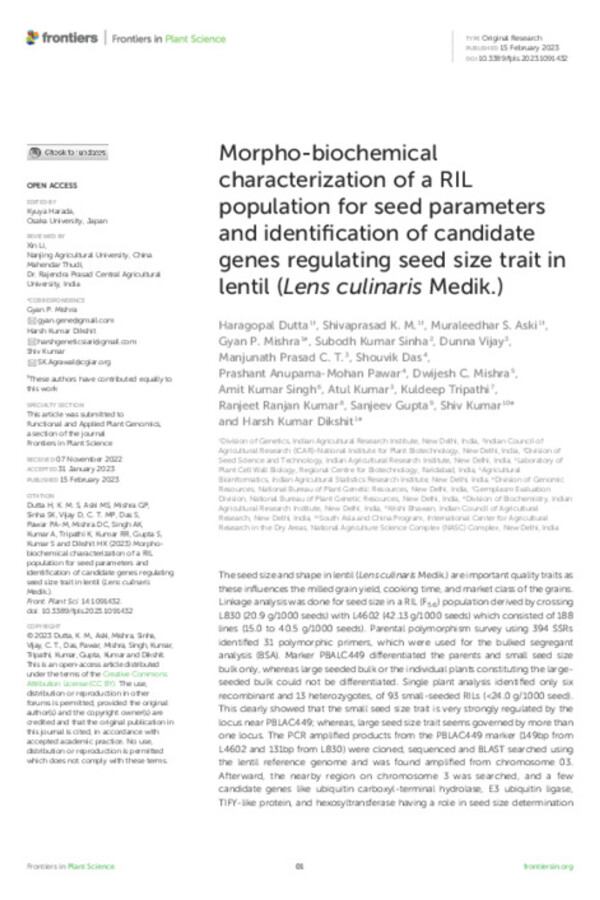
![Genome wide association analysis for grain micronutrients and anti-nutritional traits in mungbean [Vigna radiata (L.) R. Wilczek] using SNP markers Genome wide association analysis for grain micronutrients and anti-nutritional traits in mungbean [Vigna radiata (L.) R. Wilczek] using SNP markers](/sites/default/files/styles/display_06_verical/public/feeds/publications/48a371387966fe9efed1800c8b8f95e1.jpg?h=c974c01c&itok=o2TRvzsn)
